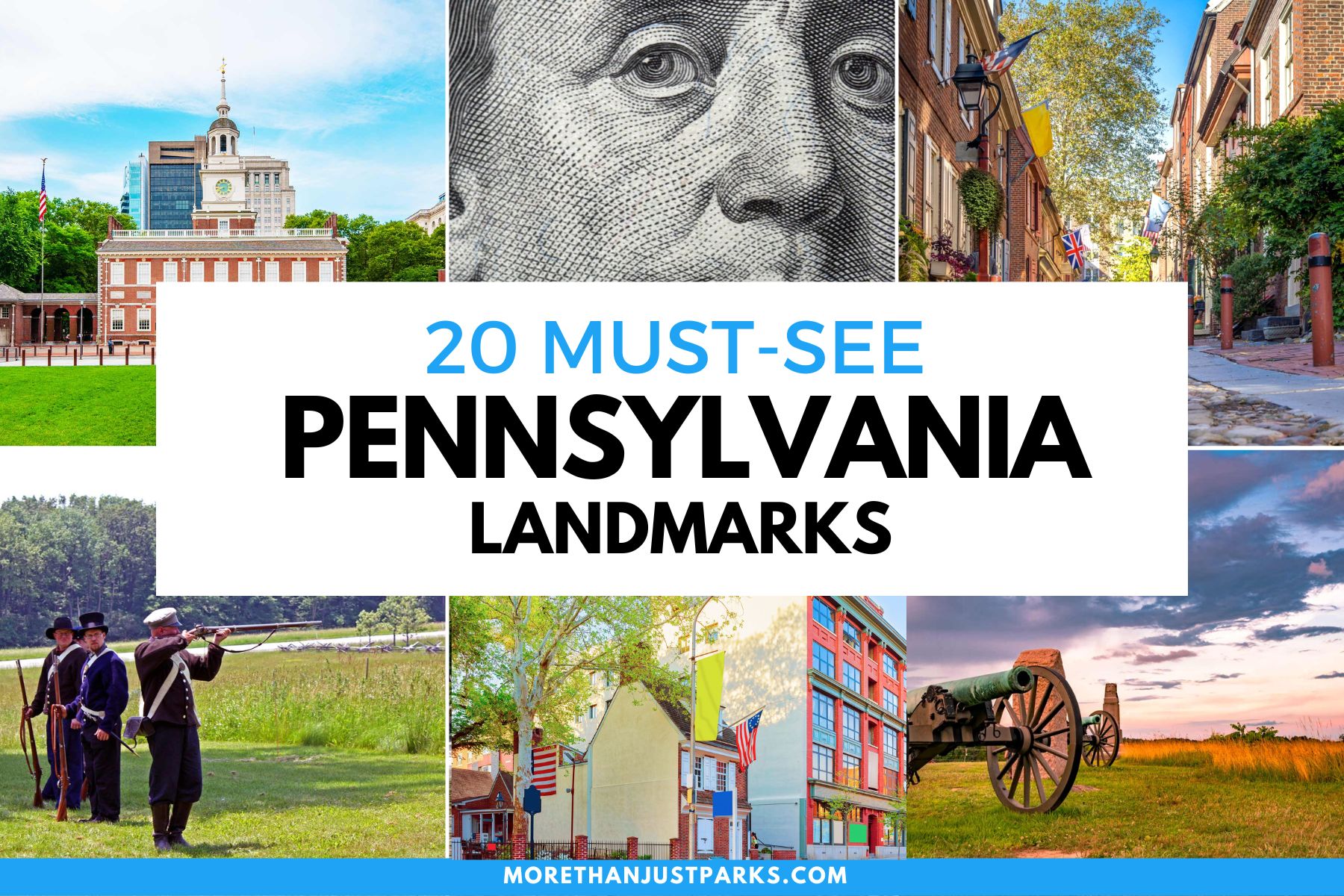
Article Summary: Pennsylvania Landmarks
Pennsylvania Landmarks. More Than Just Parks has 20 incredible must-see sites for you to visit.
There’s so much more to this exciting place than the Philadelphia Eagles. In this article, we’ll familiarize you with the incredible landmarks located in The Keystone State.
We’ve got incredible places, iconic memorials, fascinating museums, epic monuments and so much more.
We’re going to give you our list of the Top 20 Landmarks In Pennsylvania.
So, What Is A Landmark?
Well, it’s a place of “a special character or special historical or aesthetic interest or value as part of the development, heritage, or cultural characteristics of a city, state, or nation.”
Why visit these places? Because landmarks connect us to the past. Through visiting these wonderful places where history occurred we find our roots. It allows us to feel like we are a part of something much bigger than ourselves.
And, speaking of history, did I mention that I taught the subject? I spent a lifetime teaching about the history behind many of these amazing sites. Then I got to see them firsthand. And now I’m sharing the fascinating stories of these places with you. It doesn’t get any better than that!
So, without further ado, let’s dive in.
Pennsylvania Landmarks
Some Fascinating Facts About Pennsylvania
Here’s some interesting facts about The Keystone State:
- Pennsylvania is known as the Keystone State because of its role in the founding of the United States. It served as the center of many of the country’s earliest settlements and played a pivotal role in the American Revolution.
- Pennsylvania has a rich history, and it was one of the original thirteen colonies that declared independence from Great Britain in 1776. Philadelphia served as the capital of the United States from 1790 to 1800.
- The Liberty Bell, one of the most iconic symbols of American independence, is located in Philadelphia. It was first rung in 1752 and became an enduring symbol of American freedom and liberty.
- Pennsylvania is home to Hershey’s Chocolate World, the largest chocolate manufacturer in North America. The Hershey Company was founded by Milton Hershey in 1894 and is now a global brand.
- The first U.S. Zoo, the Philadelphia Zoo, was opened in Philadelphia in 1874. It is still open to visitors today and is one of the most popular tourist attractions in the state.
- The Gettysburg National Military Park is located in Pennsylvania and is the site of the Civil War’s largest and deadliest battle. The park attracts millions of visitors every year who come to learn about the history of the battle and pay their respects to the soldiers who fought and died there.
- Pennsylvania is home to some of the most famous universities in the country, including the University of Pennsylvania, Penn State University, and Carnegie Mellon University.
- Punxsutawney Phil, the famous groundhog that predicts the end of winter, lives in Punxsutawney, Pennsylvania. Every year on February 2nd, thousands of people gather to see whether Phil sees his shadow, which is said to predict six more weeks of winter.
- The Pennsylvania Dutch, also known as the Amish, are a group of people who live in rural Pennsylvania and are known for their simple, traditional way of life. They are famous for their crafts, such as quilts and furniture, and their farming practices, which rely on horses and other non-motorized equipment.
- The largest indoor water park in the United States, Kalahari Resorts and Conventions, is located in the Pocono Mountains of Pennsylvania. It spans over 220,000 square feet and features a variety of water rides and attractions.
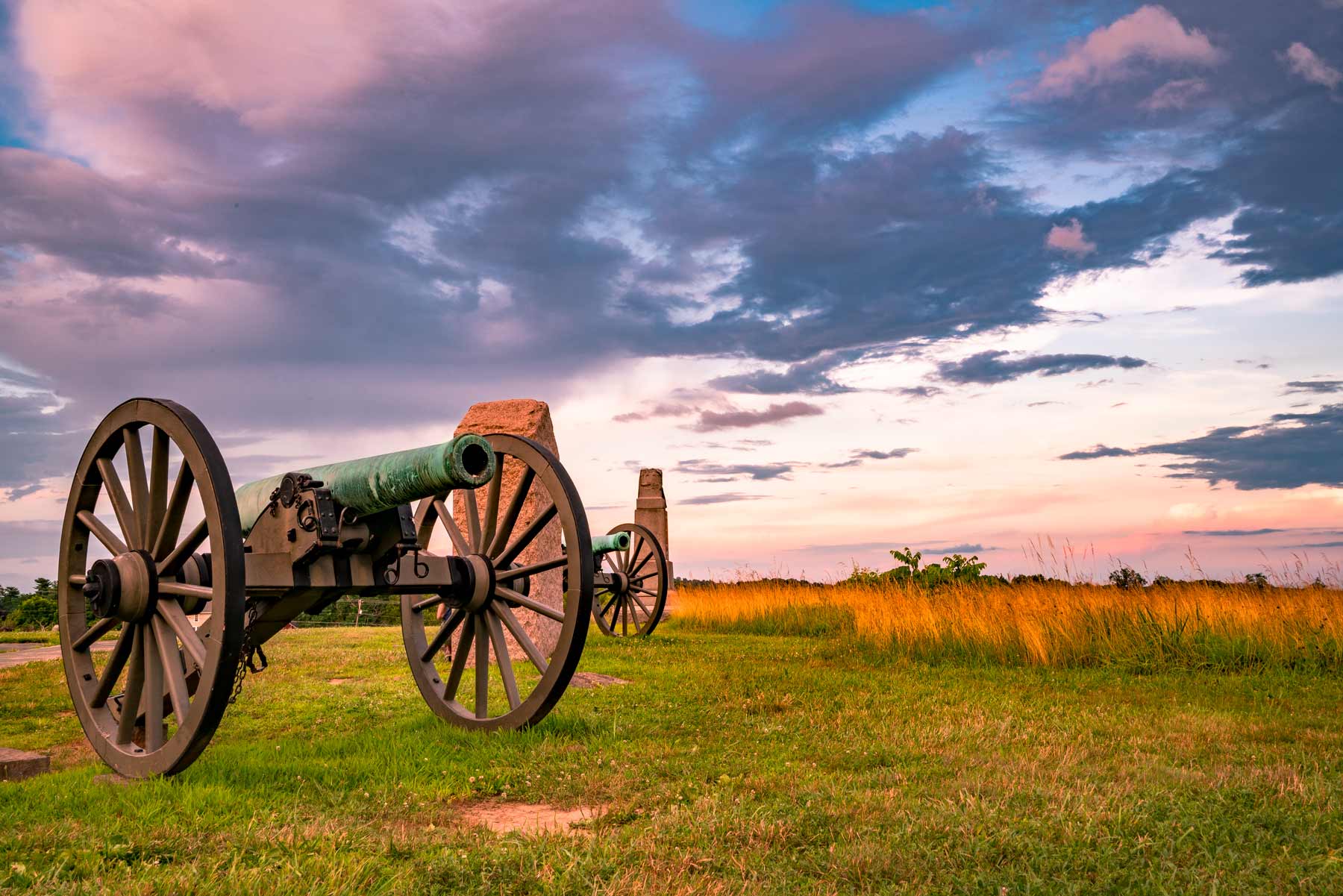
Gettysburg, Pennsylvania | Pennsylvania Landmarks
Top 20 Pennsylvania Landmarks
20. Fort Necessity National Battlefield
More Than Just Parks is kicking off our list of what we consider to be the Top 20 Pennsylvania Landmarks at #20 with Fort Necessity National Battlefield.
Fort Necessity National Battlefield commemorates the first battle of the French and Indian War, fought in 1754 between British and French forces.
In 1753, the French began to build a series of forts along the Ohio River, which the British claimed as part of their territory. The British responded by sending an expedition to the area led by a young George Washington, who at the time was a colonel in the Virginia militia.
In May 1754, Washington and his troops clashed with a French detachment near what is now Fort Necessity National Battlefield. The battle lasted several hours and resulted in heavy casualties on both sides, with Washington eventually surrendering to the French.
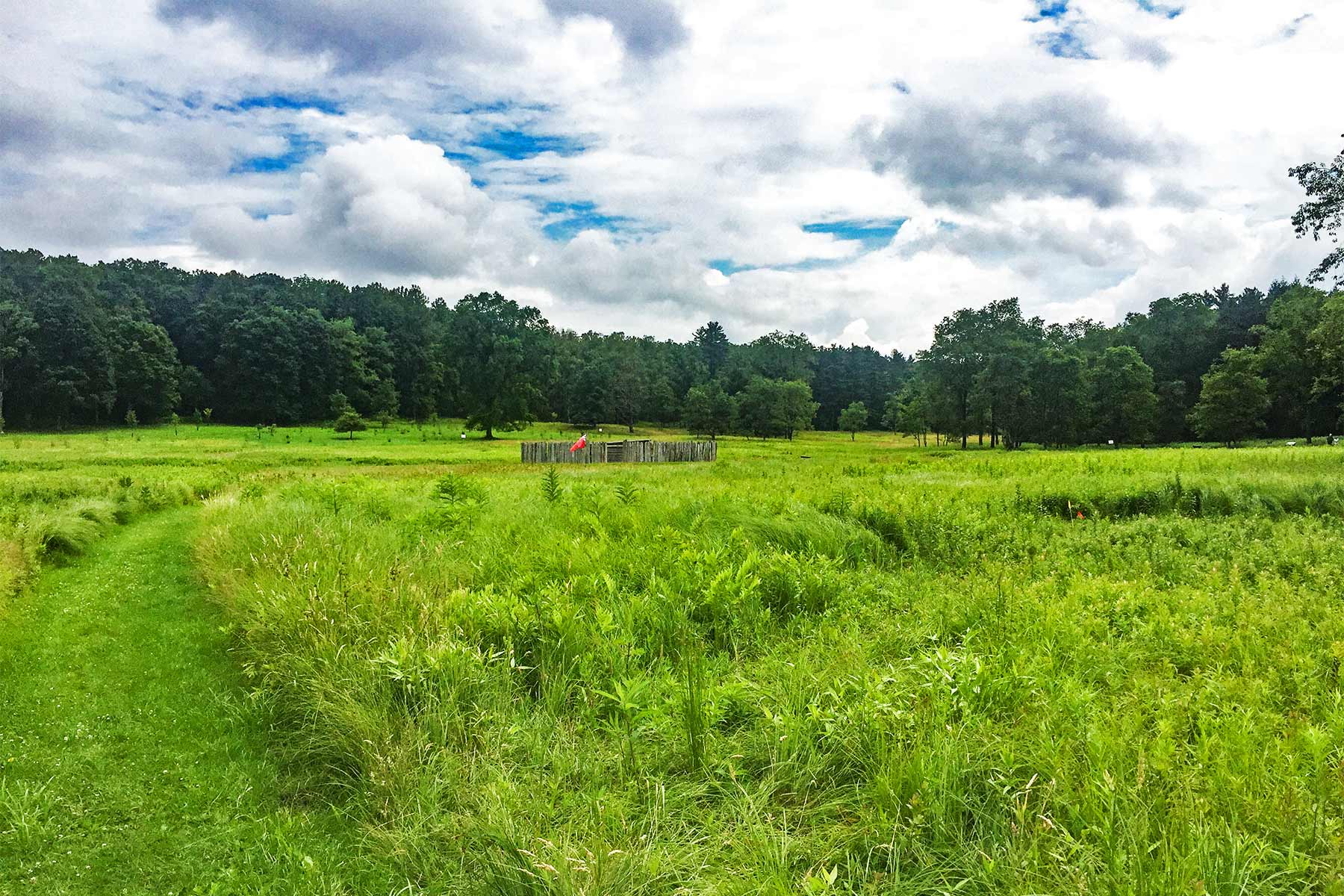
George Washington At Fort Necessity
Following the battle, Washington and his troops retreated to a nearby meadow where they built a small fortification that they called Fort Necessity. The French attacked the fort the following day, and after a long and grueling battle, Washington was forced to surrender once again.
The events at Fort Necessity were a significant precursor to the French and Indian War, which would continue for several more years and ultimately result in British victory and the ceding of much of the Ohio Valley to the British.
The site of Fort Necessity was later acquired by the federal government and designated a National Battlefield in 1931, recognizing its importance as a significant moment in American history.
Today, visitors to Fort Necessity National Battlefield can explore the reconstructed fortification and other historic structures, as well as enjoy a variety of educational programs and interpretive exhibits that help tell the story of this important moment in American history.
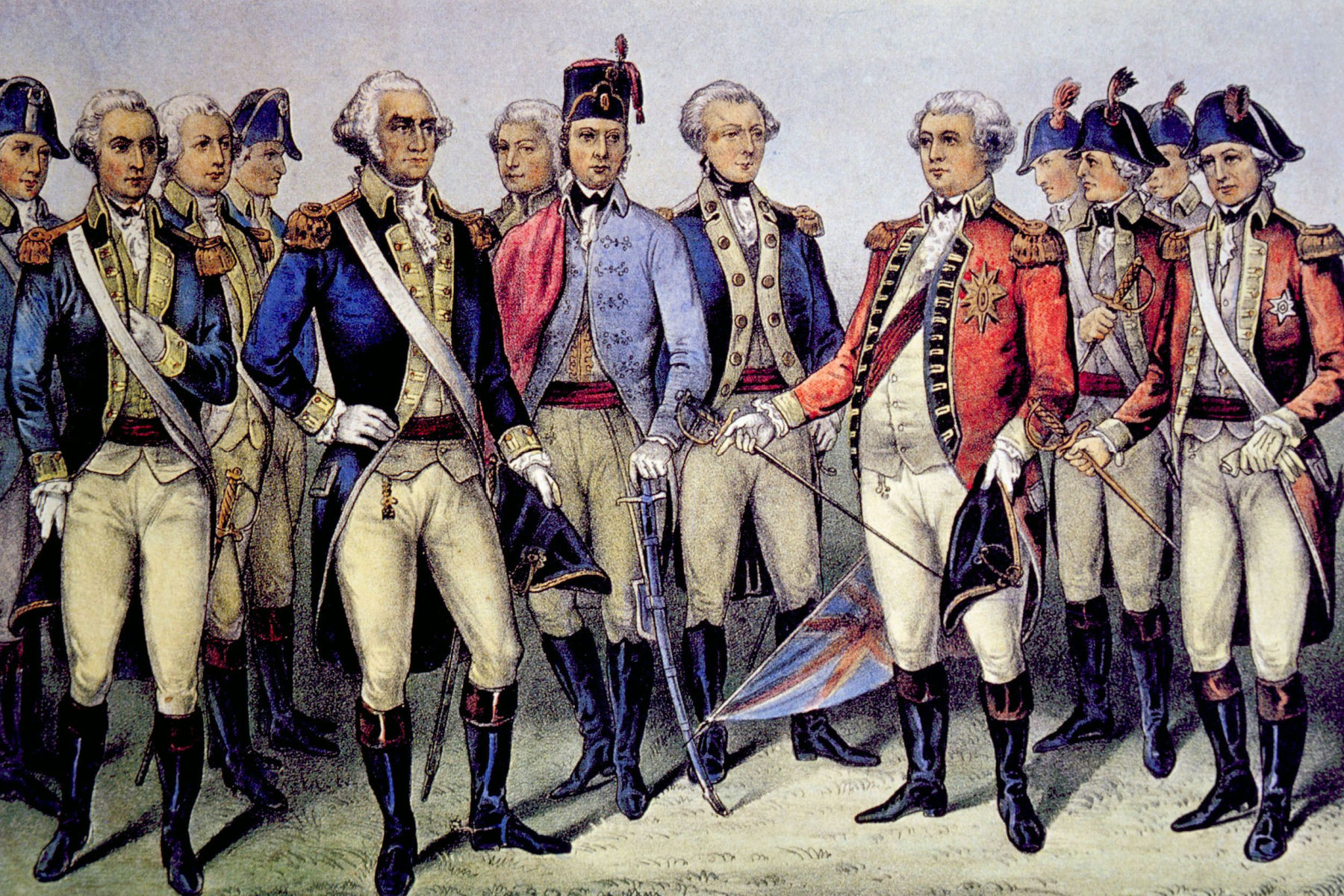
19. American Philosophical Society Museum
The American Philosophical Society Museum is dedicated to exploring the intersections between science, history, and art. The museum is part of the American Philosophical Society, which was founded in 1743 by Benjamin Franklin and other intellectuals of the time. And it’s #19 on our list of the Best Pennsylvania Landmarks.
The society was initially established as a way for individuals to meet and discuss scientific and philosophical ideas, and it quickly became an important center for scholarship and research. Over the years, the society has counted many famous scientists, philosophers, and other intellectuals among its members, including: Thomas Jefferson, John Adams, Charles Darwin, and Albert Einstein.
The society’s museum was founded in the early 19th century, and it originally focused on natural history and the exploration of the American West. In the years that followed, the museum expanded its collections to include a wide range of scientific and historical artifacts, as well as art and other cultural objects.
Today, the American Philosophical Society Museum features a wide range of exhibits that explore the history of science and the intersection between science, history, and culture. The museum’s collections include everything from fossils and rare books to Native American artifacts and contemporary art.
Over the years, the American Philosophical Society Museum has become an important center for scholarship and research, and it remains an important cultural institution in Philadelphia and beyond.

American Philosophical Society Museum | Courtesy of Wikimedia Commons
18. Allegheny Portage Railroad National Historic Site
We move from a place which celebrates philosophy to that honors travel. Next up at #18 on our list of the Best Pennsylvania Landmarks is the Allegheny Portage Railroad National Historic Site.
The Allegheny Portage Railroad National Historic Site commemorates the historic portage railroad that was used to transport goods and people across the Allegheny Mountains during the mid-19th century.
The idea for the portage railroad was first proposed in the early 1800s as a way to connect Philadelphia and Pittsburgh, two of the largest cities in Pennsylvania. The Allegheny Mountains presented a formidable obstacle to transportation, with steep grades and rugged terrain making it difficult to build a road or canal.
Construction of the portage railroad began in 1831, and it was completed in 1834. The railroad consisted of a series of inclined planes and level sections, connected by canals and rail lines, that allowed boats to be lifted over the mountains and transported by rail to their destination.
The portage railroad quickly became a vital transportation link, facilitating trade and commerce between the eastern and western parts of Pennsylvania. It also played an important role in the development of the United States, helping to connect the eastern seaboard with the growing frontier.
As technology improved and railroads became more widespread, the need for the portage railroad declined, and it was eventually decommissioned in the 1850s.
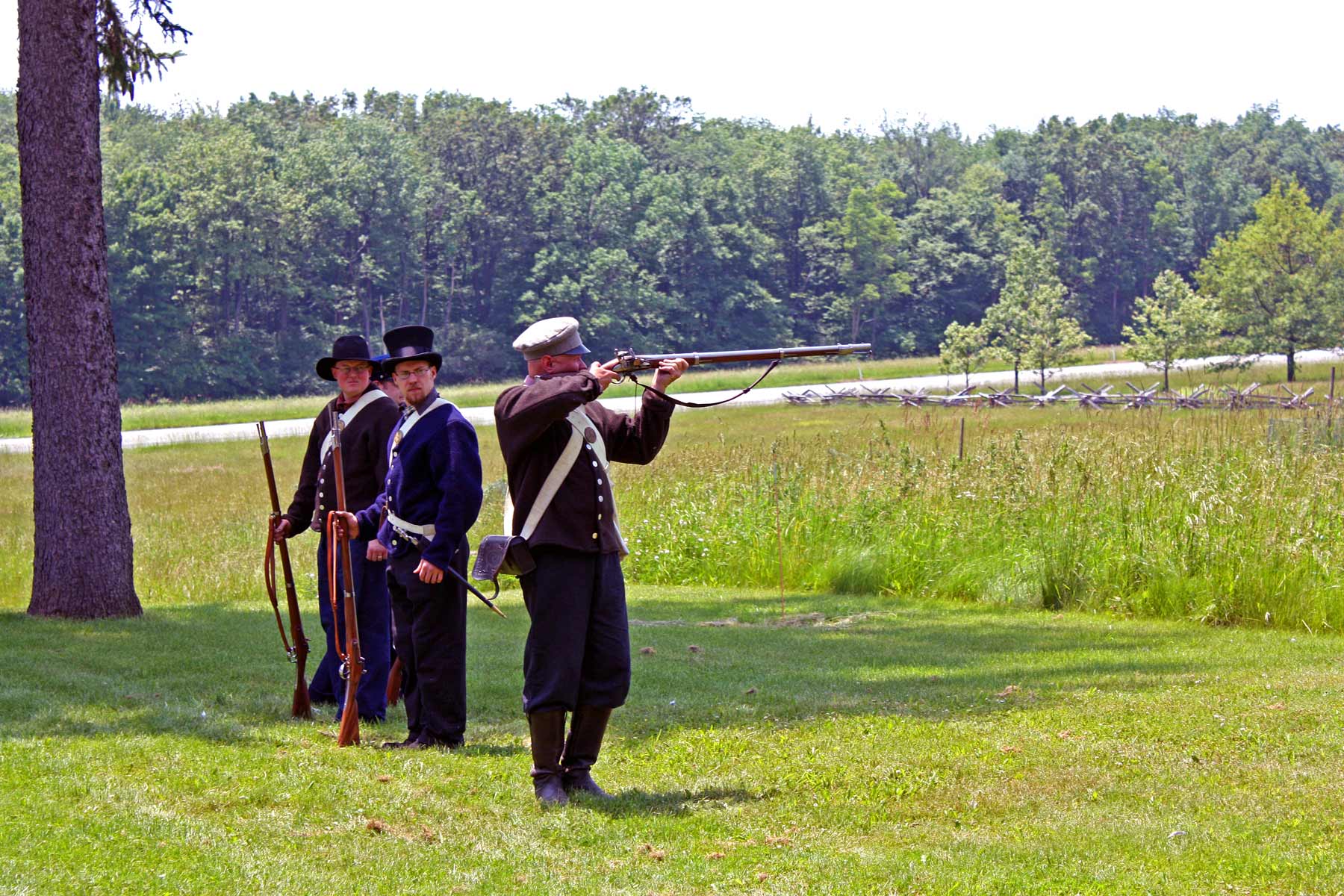
Things To Do At The Portage
Here are some things to do at the site:
- Visit the Visitor Center: The Visitor Center is a great place to start your visit to the site. Here you can learn about the history of the Allegheny Portage Railroad and the people who built and used it.
- Explore the Historic Railroad: Take a guided tour or hike the trails to explore the historic Allegheny Portage Railroad. You can see the Lemon House, Engine House No. 6, and the Skew Arch Bridge.
- Hike the Trails: The site has several hiking trails that offer stunning views of the surrounding mountains and forests. Some popular trails include the Staple Bend Tunnel Trail, the Allegheny Portage Railroad Trail, and the Summit Level Trail.
- Picnic: Pack a picnic lunch and enjoy a meal at one of the picnic tables on site. The picnic area is located near the Lemon House, and offers a peaceful spot to relax and enjoy the outdoors.
- Wildlife Viewing: The park is a great place for wildlife viewing. You can see a variety of birds, including bald eagles, as well as other animals like deer and black bears.
- Visit the Engine House Museum: The Engine House Museum houses several exhibits on the Allegheny Portage Railroad, including a reconstructed engine and a diorama of the summit level.
- Camping: The nearby campgrounds provide visitors with an opportunity to spend more time at the park and take in all that the surrounding wilderness has to offer.
- Boating and Fishing: The park provides access to the 3,000-acre Glendale Lake, which is perfect for boating, fishing, and kayaking.
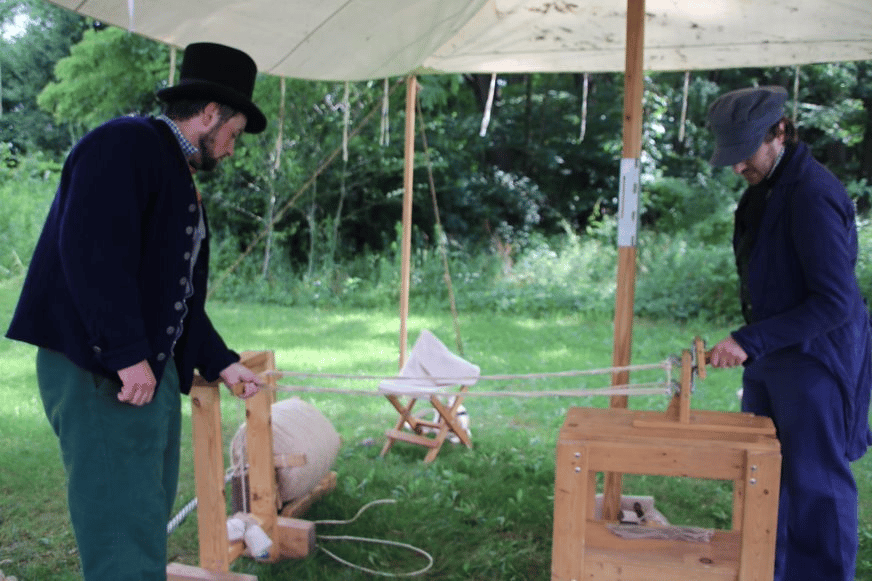
17. National Constitution Center
Our next Pennsylvania landmark serves as America’s leading platform for constitutional education and debate, fulfilling its congressional charter “to disseminate information about the U.S. Constitution on a nonpartisan basis in order to increase awareness and understanding of the Constitution among Americans.
At #17 on our list of the Best Pennsylvania Landmarks is the National Constitution Center.
The National Constitution Center is a museum and educational institution dedicated to the history and interpretation of the United States Constitution. The idea for the center was first proposed in the early 1980s, and after several years of planning and fundraising, construction began in 1999.
The National Constitution Center was officially opened on July 4, 2003, with a ceremony attended by then-President George W. Bush.
The center’s main exhibition, “The Story of We the People,” explores the history and significance of the Constitution through interactive exhibits, multimedia displays, and artifacts such as original copies of the Constitution, the Bill of Rights, and other important documents.
The Center Hosts A Variety Of Temporary Exhibits & Programs
In addition to its permanent exhibition, the National Constitution Center hosts a variety of temporary exhibits and programs throughout the year, as well as public debates, lectures, and other events on topics related to the Constitution and American democracy.
One of the center’s most notable events was the 2008 presidential debate between Barack Obama and John McCain, which was held in the center’s main auditorium and broadcast live to millions of viewers around the world.
Since its opening, the National Constitution Center has become a leading institution for the study and interpretation of the Constitution, as well as an important educational resource for students and teachers across the United States.
The center has received numerous awards and honors for its work, including a Presidential Medal in 2009, and continues to be a vital part of Philadelphia’s cultural and intellectual life.
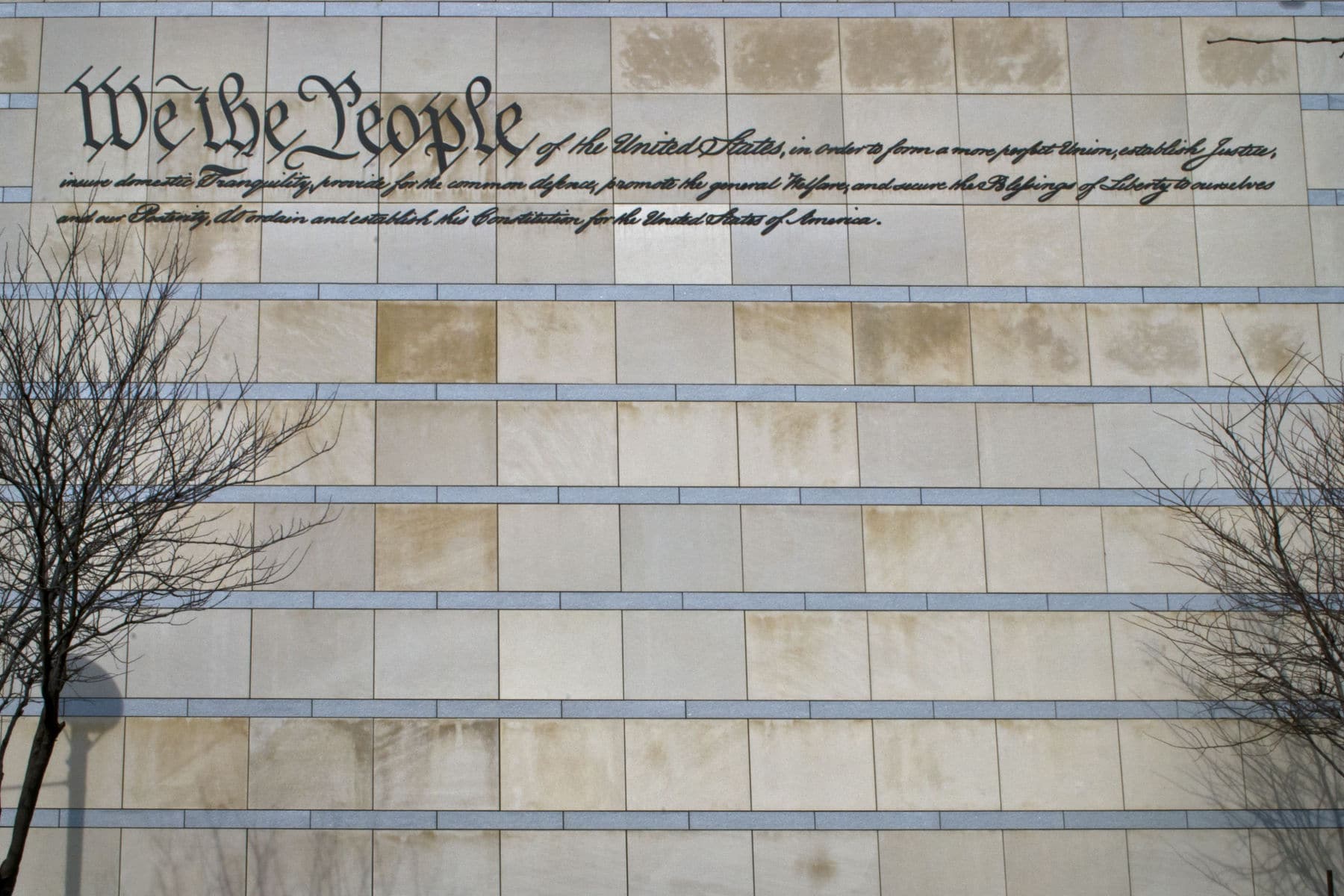
16. The African American Museum in Philadelphia
At #16 on our list of the Best Pennsylvania Landmarks is The African American Museum in Philadelphia.
The African American Museum in Philadelphia (AAMP) is the first institution in the United States devoted to preserving, interpreting and exhibiting the history and culture of African Americans. The museum was founded in 1976, during the United States Bicentennial Celebration, and is located in Philadelphia.
The idea for the museum was first proposed by a group of black activists, scholars and artists who felt that the contributions of African Americans to American history were not being recognized or adequately represented in mainstream museums. They believed that a museum dedicated to African American history and culture would help to educate the public and promote greater understanding and appreciation of the African American experience.
The museum first opened its doors in 1976, with a small exhibition in the basement of the Belmont Mansion, a historic house in Fairmount Park. The exhibition, entitled “Black Artists in Philadelphia, 1920-1976,” showcased the work of African American artists from Philadelphia and attracted over 35,000 visitors.
In 1980, the museum moved to its current location in Philadelphia’s historic district, on Arch Street between 6th and 7th Streets. The museum’s building is a former residence for a wealthy merchant, and has been renovated to include exhibition galleries, a theater, a café, and a gift shop.
The AAMP Has Featured Over 50 Exhibitions On A Range Of Topics
Since its inception, the AAMP has mounted over 50 exhibitions on a range of topics related to African American history and culture.
The museum’s permanent exhibition, “Audacious Freedom: African Americans in Philadelphia, 1776-1876,” traces the history of African Americans in Philadelphia from the Revolutionary War to the end of Reconstruction. The exhibition includes interactive displays, artifacts, and multimedia presentations, and has won numerous awards for its innovative design.
Today, the African American Museum in Philadelphia is a thriving institution that serves as a hub for education, culture, and community engagement. The museum offers a range of programs and events for visitors of all ages, including lectures, workshops, film screenings, and live performances.
Through its exhibitions, programs, and outreach efforts, the AAMP continues to promote greater understanding and appreciation of the African American experience, and to celebrate the contributions of African Americans to American history and culture.

The African American Museum in Philadelphia | Courtesy of Wikimedia Commons
Top 15 Pennsylvania Landmarks
15. Elfreth’s Alley
We’re on to the Top 15 Pennsylvania Landmarks. Our next site is an “exceptional example of early American structures built between 1720 and 1830” according to the historic marker designated in 2016. At #15 on our list of the Best Pennsylvania Landmarks is Elfreth’s Alley.
Elfreth’s Alley is a historic street that is widely recognized as one of the oldest continuously inhabited residential streets in the United States. The street is located in the Old City neighborhood of Philadelphia, between 2nd Street and Front Street, and is named after Jeremiah Elfreth, a blacksmith who owned and operated a shop on the street in the 18th century.
The history of Elfreth’s Alley dates back to the early 1700s, when Philadelphia was a thriving port city and a center of trade and commerce. The street was originally a narrow alley that was home to artisans and tradespeople who worked in the nearby waterfront district.
The earliest houses on the street were built in the early 1720s, and many of the original structures still stand today. These houses are notable for their distinctive architectural features, including steeply pitched roofs, decorative brickwork, and narrow facades that are characteristic of the colonial era.
It Was Home To A Diverse Community Of Working Class Families
Throughout the 18th and 19th centuries, Elfreth’s Alley was home to a diverse community of working-class families, including craftsmen, merchants, and laborers. The street was also home to a number of free African Americans, many of whom were skilled tradespeople who played an important role in the development of Philadelphia’s economy.
In the late 19th and early 20th centuries, Elfreth’s Alley fell into disrepair, as the city’s population shifted to other neighborhoods and many of the original houses were converted into tenements or abandoned. In the 1930s, however, a group of concerned citizens formed the Elfreth’s Alley Association and began a campaign to restore the street to its original condition.
Today, Elfreth’s Alley is a popular tourist destination and a living museum that offers visitors a glimpse into Philadelphia’s colonial past. The street is home to 32 historic houses, many of which have been restored and preserved to their original condition, and is open to the public for tours and events throughout the year.
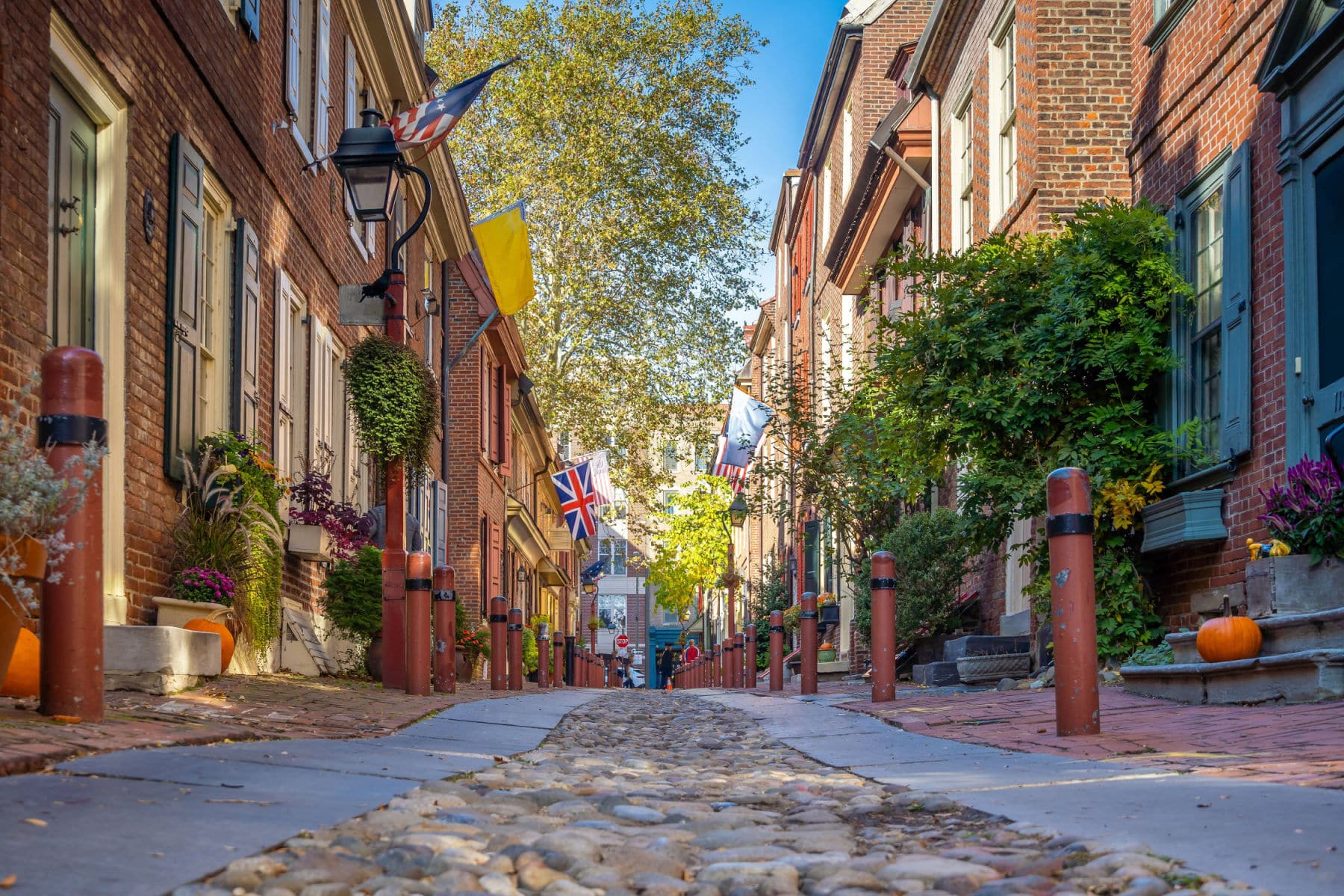
14. Museum of the American Revolution
At #14 on our list is a place which uncovers and shares compelling stories about the diverse people and complex events that sparked America’s ongoing experiment in liberty, equality, and self-government.
Welcome to the Museum of the American Revolution.
The Museum of the American Revolution explores the story of the American Revolution and the founding of the United States. The museum was opened in 2017 and is located in the heart of Philadelphia’s historic district, just steps away from Independence Hall and the Liberty Bell.
The museum’s collection includes a vast array of artifacts, documents, and interactive exhibits that bring to life the events and personalities of the American Revolution. Visitors can explore galleries that cover topics such as the causes of the Revolution, the struggle for independence, and the creation of the new nation.
The museum’s exhibits feature a range of multimedia presentations, immersive environments, and interactive displays that engage visitors of all ages.

The March to Valley Forge, December 19, 1777, by William B. T. Trego, Museum of the American Revolution | Courtesy of Wikimedia Commons
See A Life-Size Replica Of A Privateer
One of the most notable exhibits in the museum is a life-sized replica of a privateer ship, complete with interactive displays that allow visitors to experience the sights, sounds, and smells of life on board a Revolutionary-era vessel.
The museum also features a number of artifacts that are of significant historical importance, including George Washington’s tent, which served as his field headquarters during the Revolution, and the original “Don’t Tread on Me” flag, which became a symbol of American independence.
In addition to its exhibits, the Museum of the American Revolution also hosts a range of educational programs, events, and special exhibitions throughout the year. These include lectures, workshops, film screenings, and live performances that explore the themes and topics covered in the museum’s galleries.
Overall, the Museum of the American Revolution is a world-class institution that offers visitors a comprehensive and engaging look at one of the most transformative periods in American history.
Its exhibits and programs celebrate the ideals of liberty, democracy, and freedom that are at the heart of the American experience, and provide visitors with a deeper understanding of the forces that shaped the nation we know today.
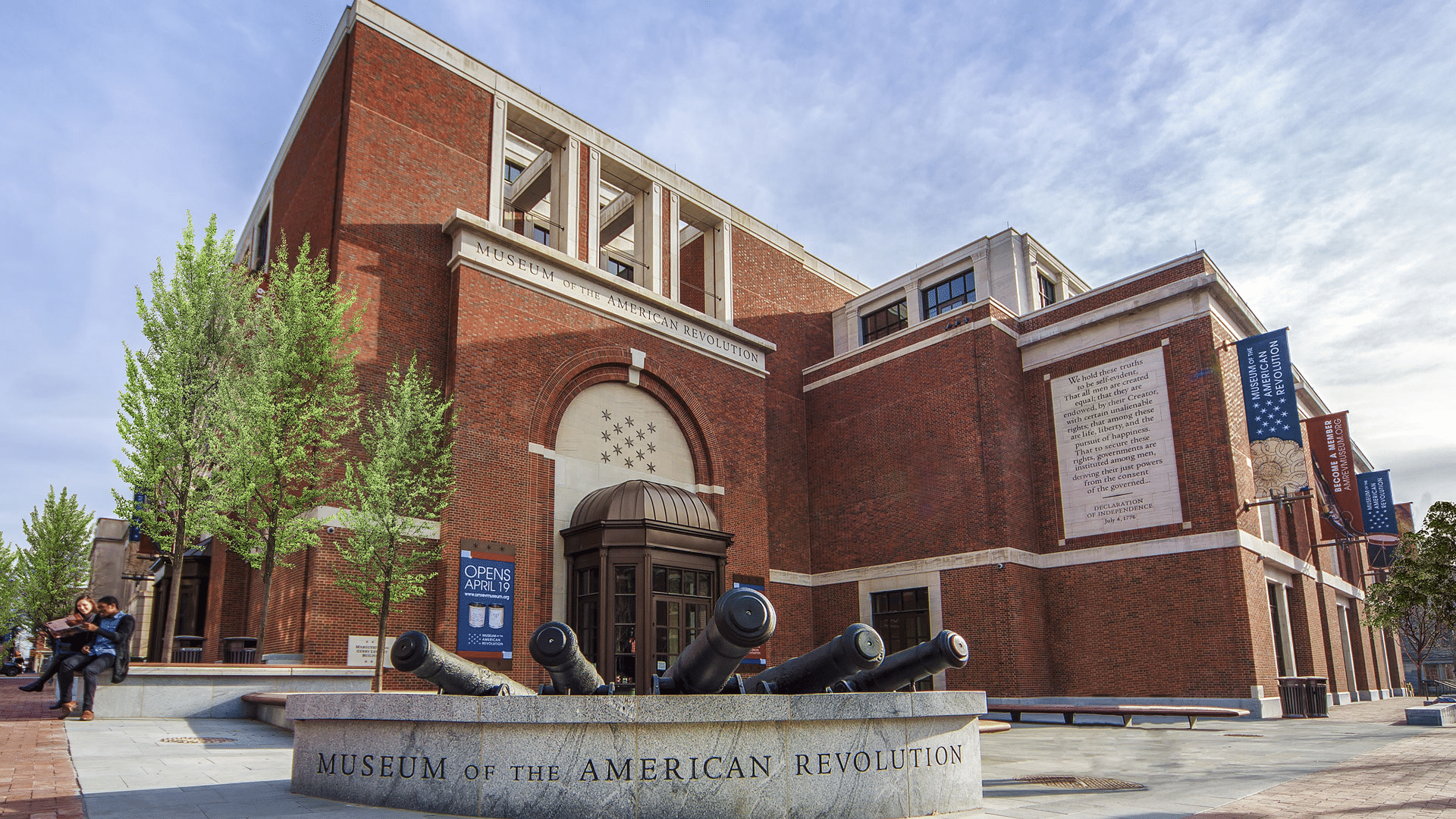
Museum of the American Revolution | Courtesy of Wikimedia Commons
13. Washington Crossing Historic Park
Our next landmark commemorates one of the pivotal events of the American Revolution. It’s Washington Crossing Historic Park, which is located in Washington Crossing, Pennsylvania.
The park’s history dates back to the early 19th century, when the property was purchased by the Commonwealth of Pennsylvania in 1815 to preserve the site of Washington’s crossing. The park was officially dedicated in 1917, and a bridge was constructed to replace the original ferry crossing.
During World War II, the park was used as a training ground for soldiers, and a replica of Washington’s Durham boat was built for use in the war effort. In the 1950s, the park was designated a National Historic Landmark, and efforts were made to restore the park to its original state.
In the 1970s, the park underwent a major renovation, with the construction of a visitor center and museum, the restoration of the historic village of Taylorsville, and the acquisition of additional land for preservation.
Today, Washington Crossing Historic Park is a popular destination for visitors and history enthusiasts, offering a variety of educational programs and events throughout the year, including reenactments of Washington’s crossing, walking tours, and special exhibits.
The park also features a number of hiking and biking trails, as well as picnic areas and other recreational facilities.
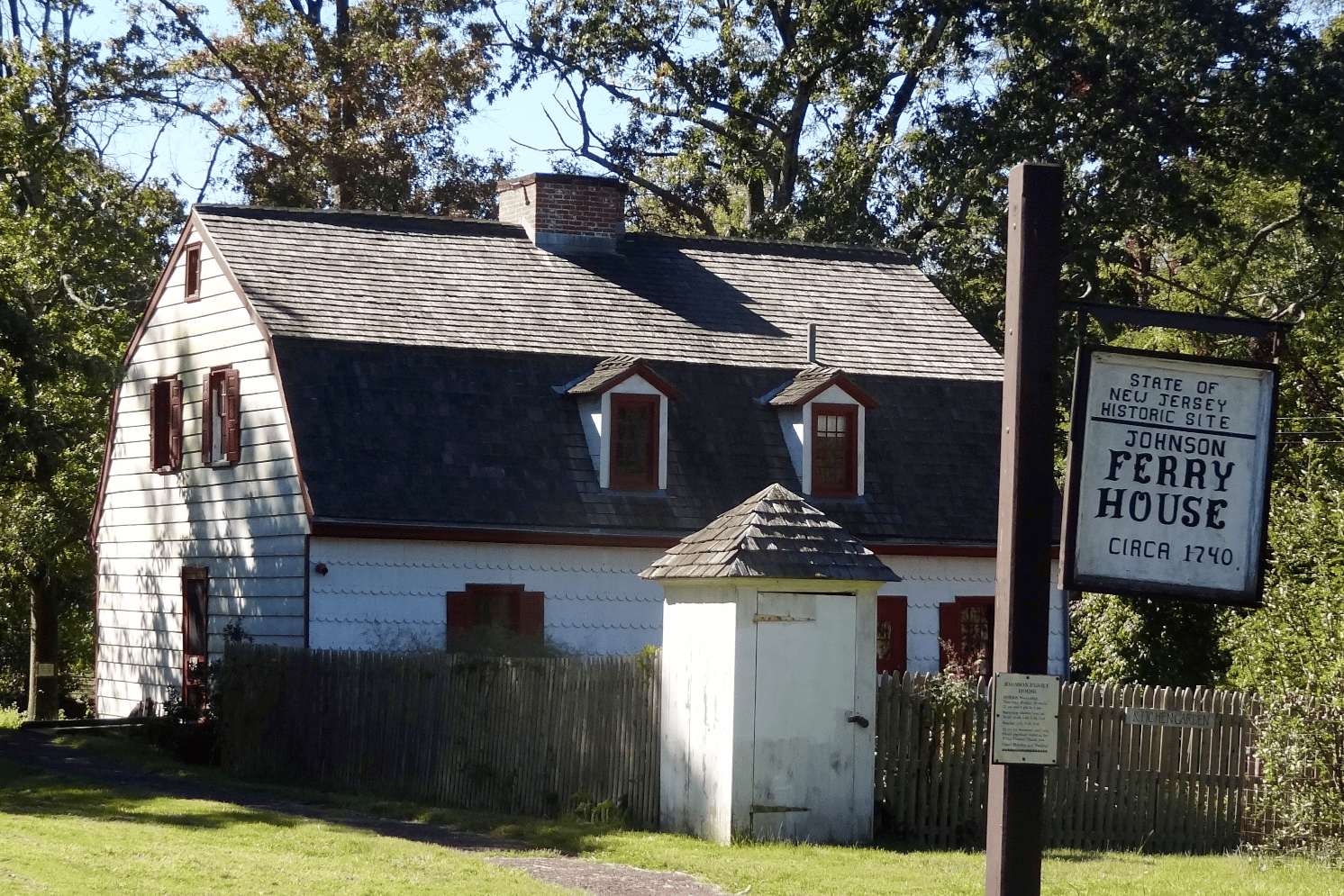
12. Thaddeus Kosciuszko National Memorial
You’re probably asking yourself: Who was Thaddeus Kosciuszko? Simply put, he was a Polish patriot who helped America win its independence in the Revolutionary War. He engineered the colonial defenses in some of the war’s most crucial battles.
His story is prominently featured in the #12 site on our list of the Best Pennsylvania Ladnmars.
The Thaddeus Kosciuszko National Memorial commemorates the life and legacy of Thaddeus Kosciuszko, a Polish military leader and revolutionary who played a key role in the American Revolution.
Kosciuszko first arrived in America in 1776, and he quickly joined the Continental Army as a military engineer. He designed and constructed fortifications, bridges, and other important infrastructure, including the defenses at Saratoga, New York, which played a crucial role in the American victory over the British.
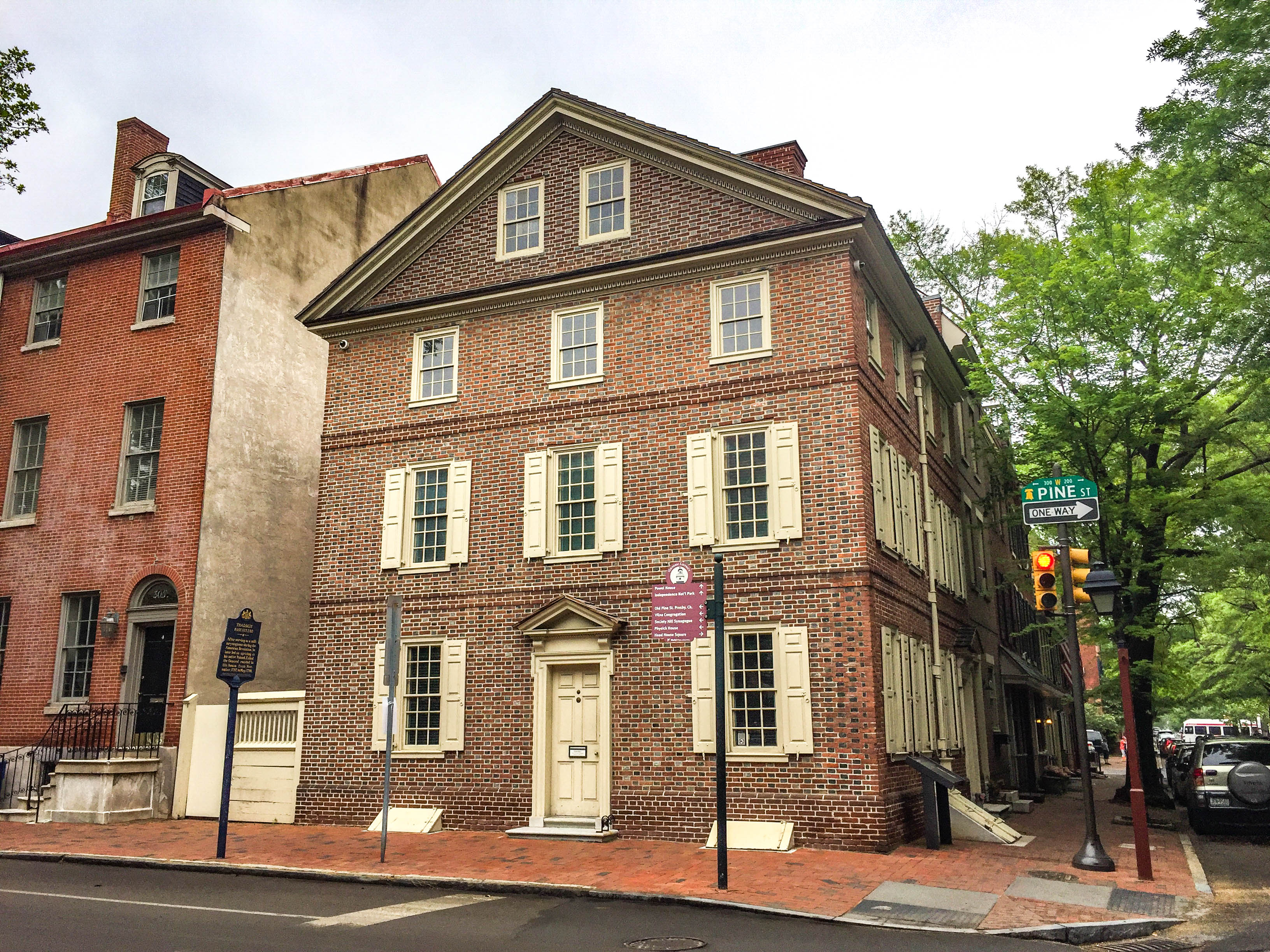
After The Revolutionary War He Went On To Fight For Polish Independence
After the war, Kosciuszko returned to Poland, where he continued to fight for independence and democracy. He played a key role in the Kosciuszko Uprising of 1794, a failed attempt to establish Polish independence from Russia and Prussia.
In 1797, Kosciuszko returned to the United States, where he was welcomed as a hero and champion of freedom. He was granted U.S. citizenship and settled in Philadelphia, where he lived for several years.
The Thaddeus Kosciuszko National Memorial was established in 1972 to commemorate Kosciuszko’s contributions to American history and his dedication to the cause of freedom and democracy. The memorial is housed in a historic townhouse in Philadelphia where Kosciuszko lived during his time in the city.
Visitors to the Thaddeus Kosciuszko National Memorial can explore the historic townhouse, which has been restored to its appearance during Kosciuszko’s time there.
The memorial also features exhibits on Kosciuszko’s life and legacy, as well as a variety of educational programs and events throughout the year, including guided tours and special exhibits.
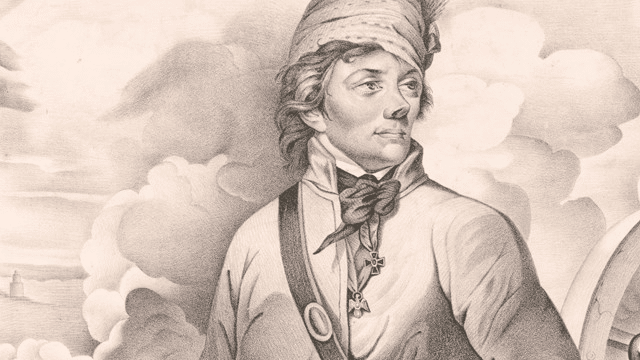
11. Philadelphia Zoo
Our next Pennsylvania landmark is home to more than 1,700 rare and endangered animals, the Zoo continues to reach new heights, offering award-winning animal exhibits, state-of-the-art healthcare facilities, award-winning education and conservation programs, and exceptional guest services, making it one of the most renowned zoos in the world.
At #11 on our list of the Best Pennsylvania Landmarks is the Philadelphia Zoo.
The Philadelphia Zoo is the oldest zoo in the United States, opening its doors on July 1, 1874. It was founded by the Zoological Society of Philadelphia, which had been formed two years earlier for the purpose of establishing a zoo. The society’s founders were inspired by the opening of the London Zoo in 1828 and wanted to bring a similar institution to Philadelphia.
The zoo’s original location was in West Fairmount Park, where it covered 42 acres. It quickly became popular with Philadelphians, attracting over 300,000 visitors in its first year. In its early years, the zoo focused primarily on displaying exotic animals from around the world, but it also housed domestic animals and birds.

The Zoo Underwent A Number Of Expansions & Improvements
Throughout the late 19th and early 20th centuries, the Philadelphia Zoo underwent a number of expansions and improvements. In 1901, the zoo acquired a male lion named “Majel,” who became the first big cat to be bred in captivity in the United States. In 1909, the zoo opened its first monkey house, which quickly became a favorite among visitors.
During the mid-20th century, the Philadelphia Zoo continued to expand and modernize. A children’s zoo was opened in In 1957, a children’s zoo was opened, featuring a petting zoo and other interactive exhibits.
The zoo opened the World of Primates in 1970, which was one of the first large-scale primate exhibits in the world.
The zoo began to focus more on conservation and education in the late 20th century. In 1997, the zoo opened the McNeil Avian Center, a state-of-the-art bird exhibit that focused on the importance of bird conservation. In 2009, the zoo opened the Rare Animal Conservation Center, which focuses on the conservation of endangered species.
Today, the Philadelphia Zoo covers 42 acres and is home to over 1,300 animals representing more than 40 species. It remains one of the most popular attractions in Philadelphia and is widely regarded as one of the best zoos in the United States.
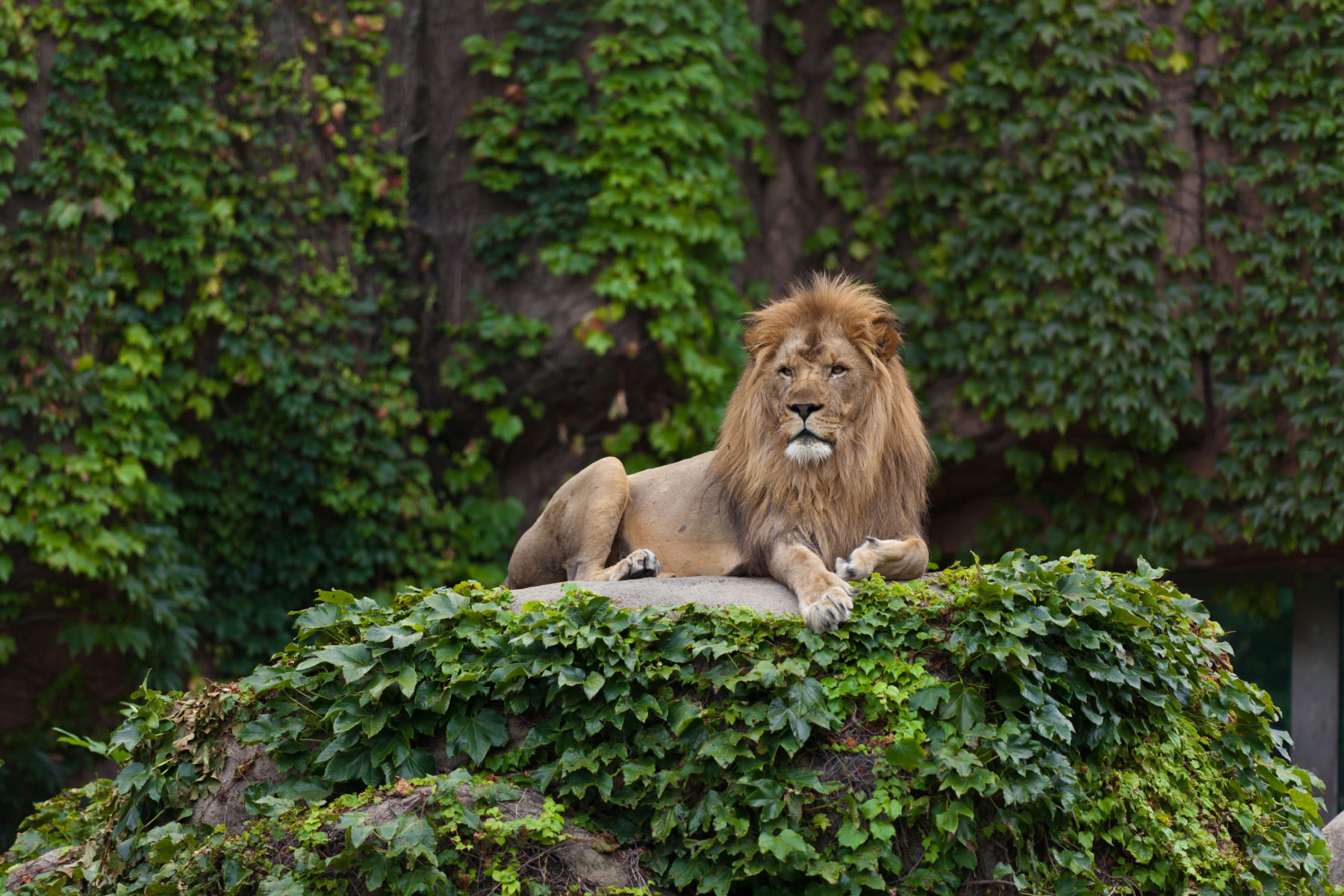
Top 10 Pennsylvania Landmarks
10. President’s House
We’re on to our list of the Top 10 Pennsylvania Landmarks. Our next site served as the official residence of the President of the United States from 1790 to 1800, during which time Philadelphia was the capital of the United States.
At #10 on our list of the Best Pennsylvania Landmarks is the President’s House.
The building was originally built in 1767 as the home of the wealthy merchant and slave trader, John Penn, a descendant of William Penn, the founder of Pennsylvania. The house was designed in the Georgian style, with two stories and a grand central staircase.
In 1790, President George Washington moved into the house, which had been leased by the federal government. The house was also used as a residence by President John Adams during his time in office.
During Washington’s presidency, the President’s House became an important center of political and social life in Philadelphia. The President held regular receptions and dinner parties there, and the house was also used for official meetings and ceremonies.

President’s House | Courtesy of Wikimedia Commons
The House Is Also Part Of A Dark Chapter In American History
However, the President’s House was also the site of a dark chapter in American history. Both Washington and Adams owned slaves, and the President’s House was staffed by enslaved people who were forced to work for the President and his family.
One of these enslaved people was Oney Judge, a young woman who had been owned by Martha Washington. In 1796, Judge escaped from the President’s House and made her way to freedom in New Hampshire, becoming one of the most famous fugitive slaves of her time.
Today, the site of the President’s House is commemorated by the President’s House Memorial, a museum and outdoor exhibit that tells the story of the enslaved people who lived and worked in the house.
The museum includes a replica of the President’s House, as well as exhibits and multimedia displays that explore the history of slavery in America and its impact on the lives of enslaved people like Oney Judge.
9. Johnston Flood Museum
Next up is another place which was part of a darker chapter in American history. At #9 on our list of the Best Pennsylvania Landmarks is the Johnstown Flood Museum.
The Johnstown Flood Museum commemorates the devastating flood that occurred on May 31, 1889, when a dam holding back a reservoir of water above the town burst, causing a catastrophic flood that killed more than 2,200 people.
The museum’s history dates back to 1926, when the Cambria Library Association established the Johnstown Flood Museum Association to preserve the history of the flood and the town’s recovery. The association began collecting artifacts and memorabilia related to the flood and raising funds to build a museum.
In 1929, the museum opened in the former Cambria Public Library building, which had been renovated and expanded to house the museum’s growing collection. The museum featured exhibits on the history of Johnstown, the flood itself, and the recovery and rebuilding efforts that followed.
The Museum Has Continued To Expand & Update Its Exhibits
Over the years, the museum continued to expand and update its exhibits, incorporating new technology and interactive displays to engage visitors and educate them about the tragedy of the flood and its impact on the community.
In 1973, the Johnstown Flood Museum was designated a National Historic Landmark, recognizing its significance as a cultural resource of national importance.
Today, the museum is part of the Johnstown Area Heritage Association, which also operates several other museums and historic sites in the area. The museum features a variety of exhibits, including artifacts, photographs, and documents related to the flood, as well as interactive displays that allow visitors to experience the power of the floodwaters firsthand.
The museum also offers educational programs and events throughout the year, including lectures, films, and guided tours.
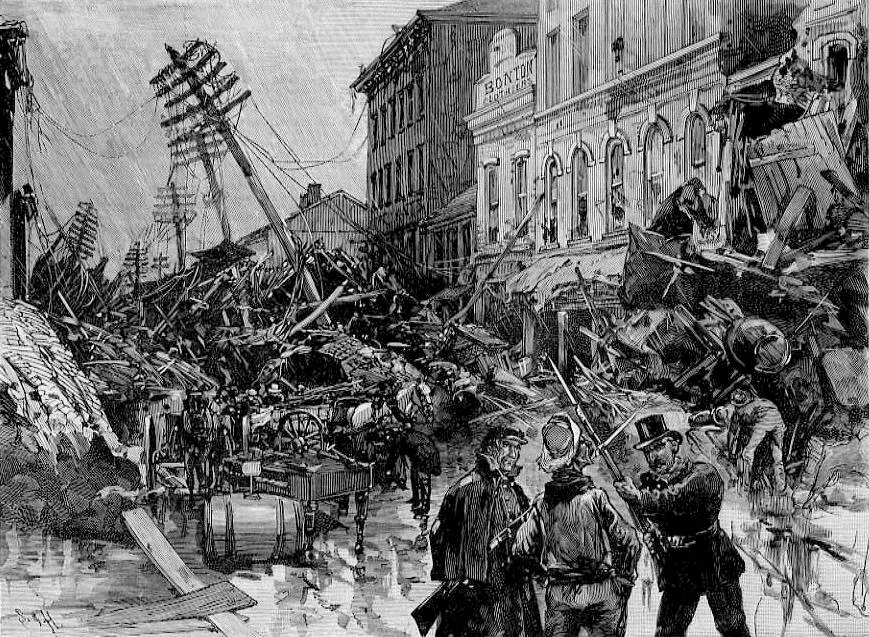
8. Betsy Ross House
Our next Philadelphia landmark is generally recognized as the place where Betsy Ross lived when she made the first American Flag. At #4 on our list of the Best Philadelphia Landmarks is the Betsy Ross House.
According to tradition, Betsy Ross was approached by a committee of the Continental Congress in 1776 and asked to create a flag for the new nation. She allegedly sewed the first American flag, which featured thirteen stripes and thirteen stars in a circle, in her home on Arch Street in Philadelphia.
The Betsy Ross House was built in 1740, and Betsy Ross is known to have lived there with her first husband, John Ross, from 1773 to 1786. The house is a small, two-story brick structure with a gable roof and a rear courtyard.
After Betsy Ross’ death, the house was used for a variety of purposes, including as a boarding house and a store. In the early 20th century, it was purchased by a group of Philadelphia women who wanted to preserve it as a historic site.
Today, the Betsy Ross House is open to the public as a museum. Visitors can tour the house and learn about Betsy Ross’ life and her role in American history.
The museum also features exhibits on colonial life in Philadelphia and the history of the American flag. The Betsy Ross House is a popular tourist attraction and an important symbol of American patriotism and history.
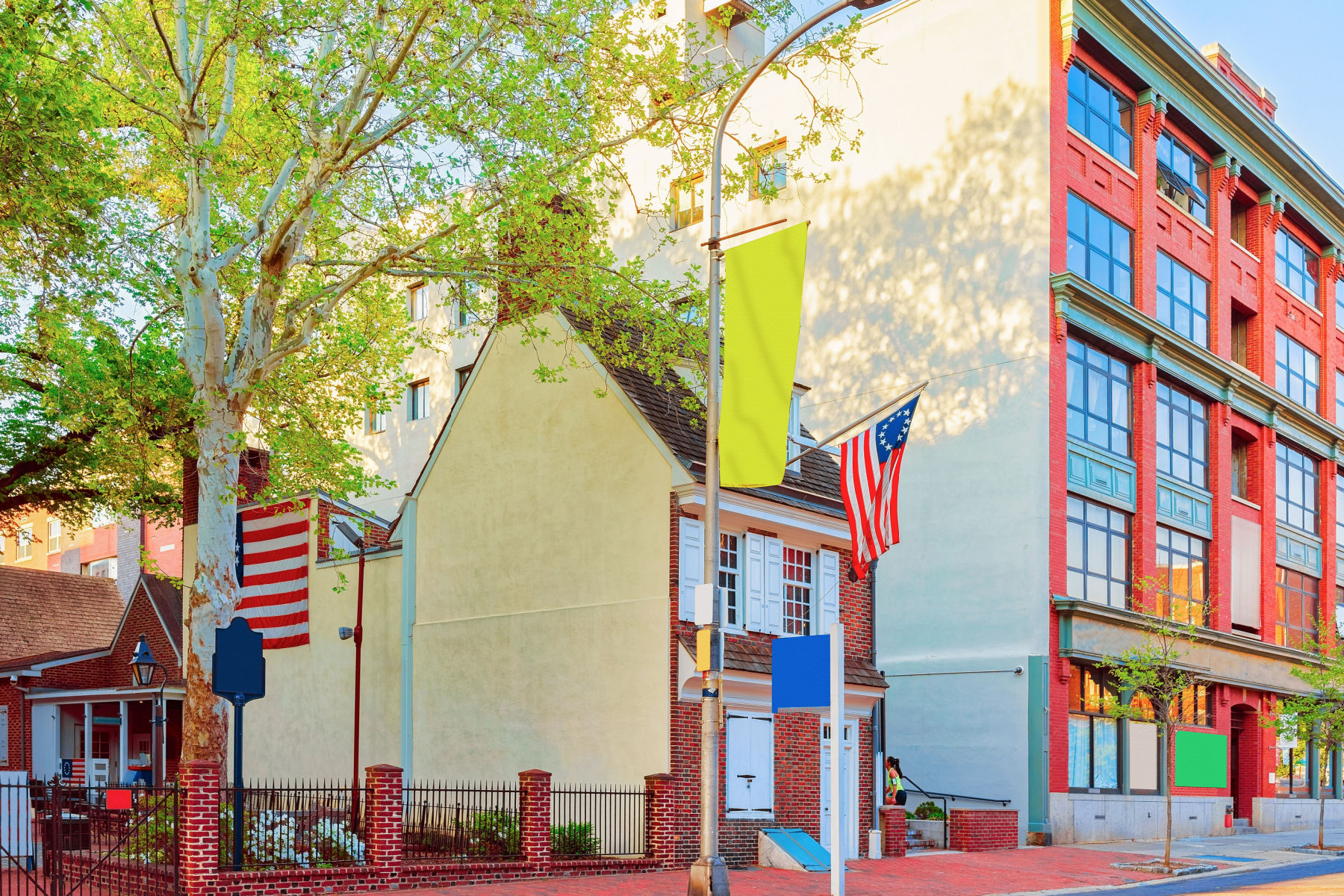
7. Hershey’s Chocolate World
We turn our attention to a sweeter subject. Next up on our list of the Best Pennsylvania Landmarks is Hershey’s Chocolate World.
Hershey’s Chocolate World is a chocolate-themed attraction located in Hershey, Pennsylvania. It is owned by The Hershey Company, one of the largest chocolate manufacturers in the world. The history of Hershey’s Chocolate World dates back to the early 20th century when Milton Hershey, the founder of The Hershey Company, began to build his chocolate empire.
Milton Hershey first became interested in chocolate-making in the late 1800s, after attending the 1893 World’s Columbian Exposition in Chicago. He decided to build a chocolate factory in his hometown of Hershey, Pennsylvania, and in 1903, the Hershey Chocolate Company was incorporated.
Over the next few decades, Milton Hershey expanded his chocolate empire, building a town around his factory and creating a variety of products, including Hershey’s Kisses, Hershey Bars, and Reese’s Peanut Butter Cups. In 1973, Hershey’s Chocolate World opened its doors as a small visitor center and retail store, located next to the Hershey’s factory.

Image courtesy of Shutterstock | valueinvestor81
It’s Become A Large Scale Attraction
Over the years, Hershey’s Chocolate World has expanded to become a large-scale attraction, featuring a variety of exhibits, rides, and activities related to chocolate-making. A tour of the Hershey’s factory was added in 1980, allowing visitors to see how chocolate is made and learn about the history of The Hershey Company.
In 1996, a new Hershey’s Chocolate World was opened, featuring a larger retail store, a food court, and a variety of interactive exhibits, including a simulated factory tour ride. In 2004, the attraction underwent a major renovation, adding new exhibits and attractions, such as the Chocolate Tasting Adventure and the Hershey’s Great Chocolate Factory Mystery in 4D.
Today, Hershey’s Chocolate World is one of the most popular tourist attractions in Pennsylvania, attracting millions of visitors each year. It continues to evolve and expand, with new exhibits and attractions added regularly, and remains a beloved destination for chocolate lovers of all ages.

Hershey’s Chocolate World | Courtesy of Wikimedia Commons
6. Benjamin Franklin Museum
Our next Pennslyvania landmark is a museum which celebrates the genius of one of America’s Founding Fathers. The museum features artifacts, computer animations, and interactive displays. The exhibits are geared toward visitors of all ages, with displays that are educational, challenging, and fun.
At #6 on our list of the Best Pennsylvania Landmarks is the Benjamin Franklin Museum.
The Benjamin Franklin Museum is a museum dedicated to the life and legacy of Benjamin Franklin, one of America’s founding fathers, inventor, and polymath.
The museum’s location is significant, as Philadelphia was an important center of political, social, and scientific activity during Franklin’s time.
The museum is located in Franklin Court, a historic site that includes the Franklin Print Shop and the Franklin Court Underground Museum, which showcases the archeological remains of Franklin’s house and shop.
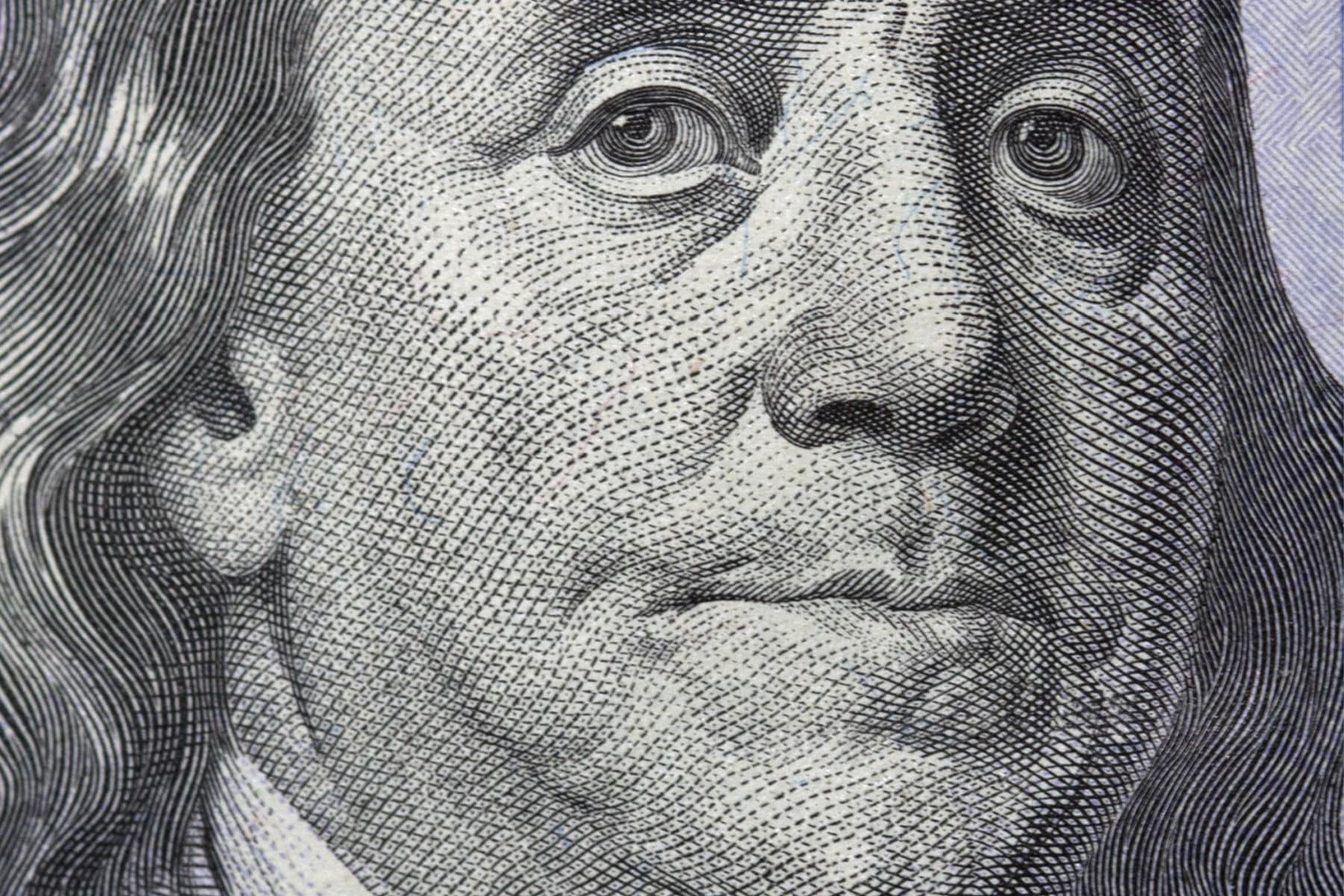
Portrait of Benjamin Franklin on the $100 bill | Shutterstock-Roninnw
It Opened As Part Of America’s Bicentennial Celebration
The Benjamin Franklin Museum was first opened in 1976, in honor of the Bicentennial of the United States. The original museum featured exhibits on Franklin’s life and accomplishments, including his experiments with electricity, his inventions, and his role in American politics.
In 2013, the museum underwent a major renovation and reopened to the public in 2018. The new museum features interactive exhibits that use multimedia and technology to tell the story of Franklin’s life and work.
Visitors can explore Franklin’s early life as a printer’s apprentice, his scientific experiments and discoveries, his political career, and his role as a diplomat and ambassador. The museum also includes a replica of Franklin’s library, which houses many of the books that he owned and read throughout his life.
Today, the Benjamin Franklin Museum is a popular tourist attraction and an important center for the study and appreciation of Benjamin Franklin’s life and legacy. It is a testament to Franklin’s enduring influence on American history and culture.
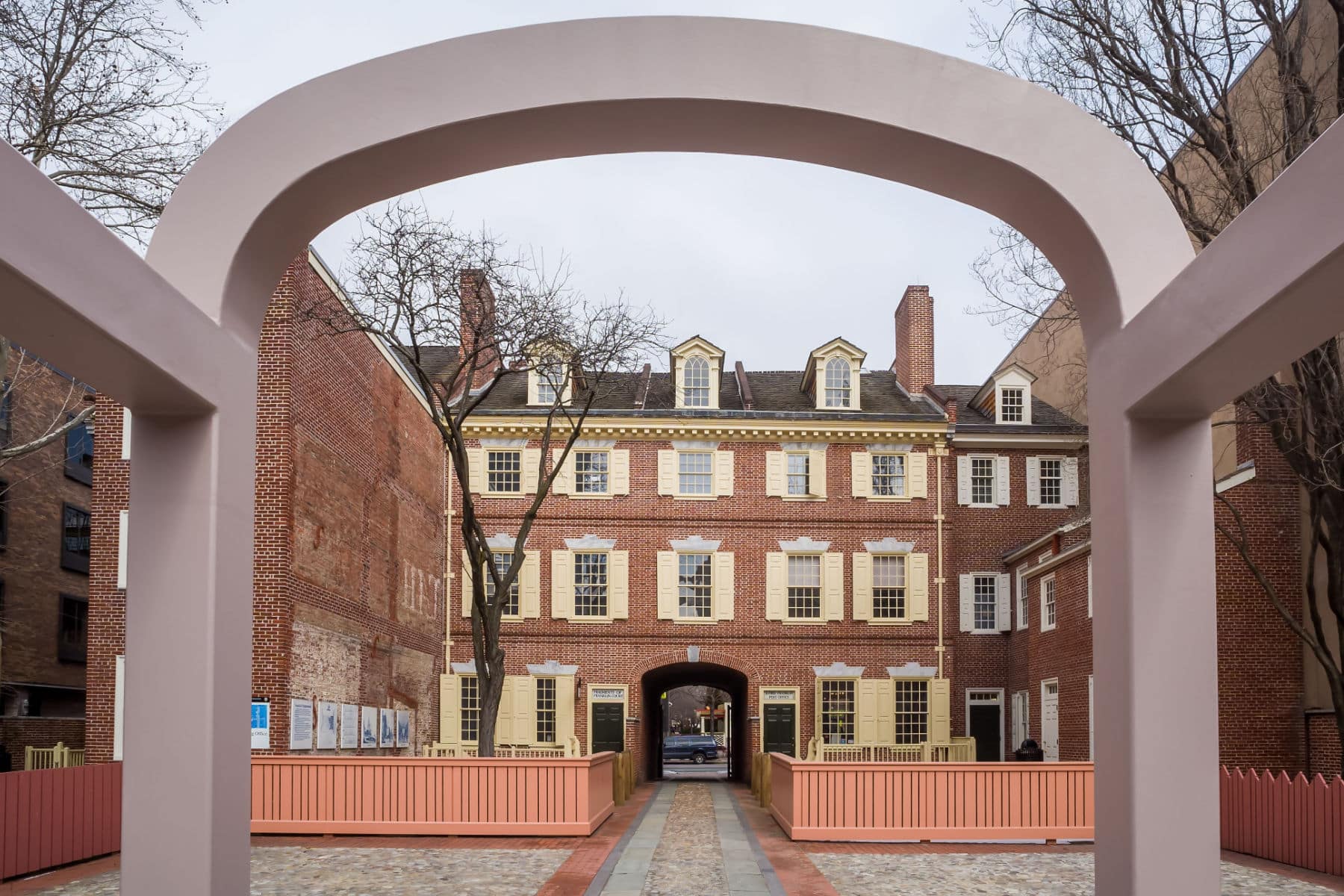
Top 5 Pennsylvania Landmarks
5. Flight 93 National Memorial
We’re on to our Top 5 Pennsylvania Landmarks. At #5 is a place which commemorates one of the deadliest attacks in American history and the brave people who gave their lives in the cause of freedom. It’s the Flight 93 National Memorial.
The Flight 93 National Memorial is was established to commemorate the events of September 11, 2001, when United Airlines Flight 93 was hijacked by terrorists and crashed into a field in rural Pennsylvania.
On the morning of September 11, 2001, four commercial airliners were hijacked by terrorists affiliated with the Islamic extremist group al-Qaeda. Two of the planes were flown into the Twin Towers of the World Trade Center in New York City, while a third was flown into the Pentagon in Arlington, Virginia.
The passengers on the fourth plane, Flight 93, learned of the attacks on the other planes through phone calls and decided to take action against the hijackers. The plane ultimately crashed into a field in Somerset County, Pennsylvania, killing all 44 people on board.
The site of the crash quickly became a makeshift memorial, with people leaving flowers, flags, and other tributes in honor of the passengers and crew of Flight 93. The National Park Service took over management of the site in 2002, and in 2009, construction began on the Flight 93 National Memorial.
Today, the memorial includes a Visitor Center and Museum, the Wall of Names, a 40-ton boulder that marks the crash site, and other features that honor the bravery and sacrifice of the passengers and crew of Flight 93.
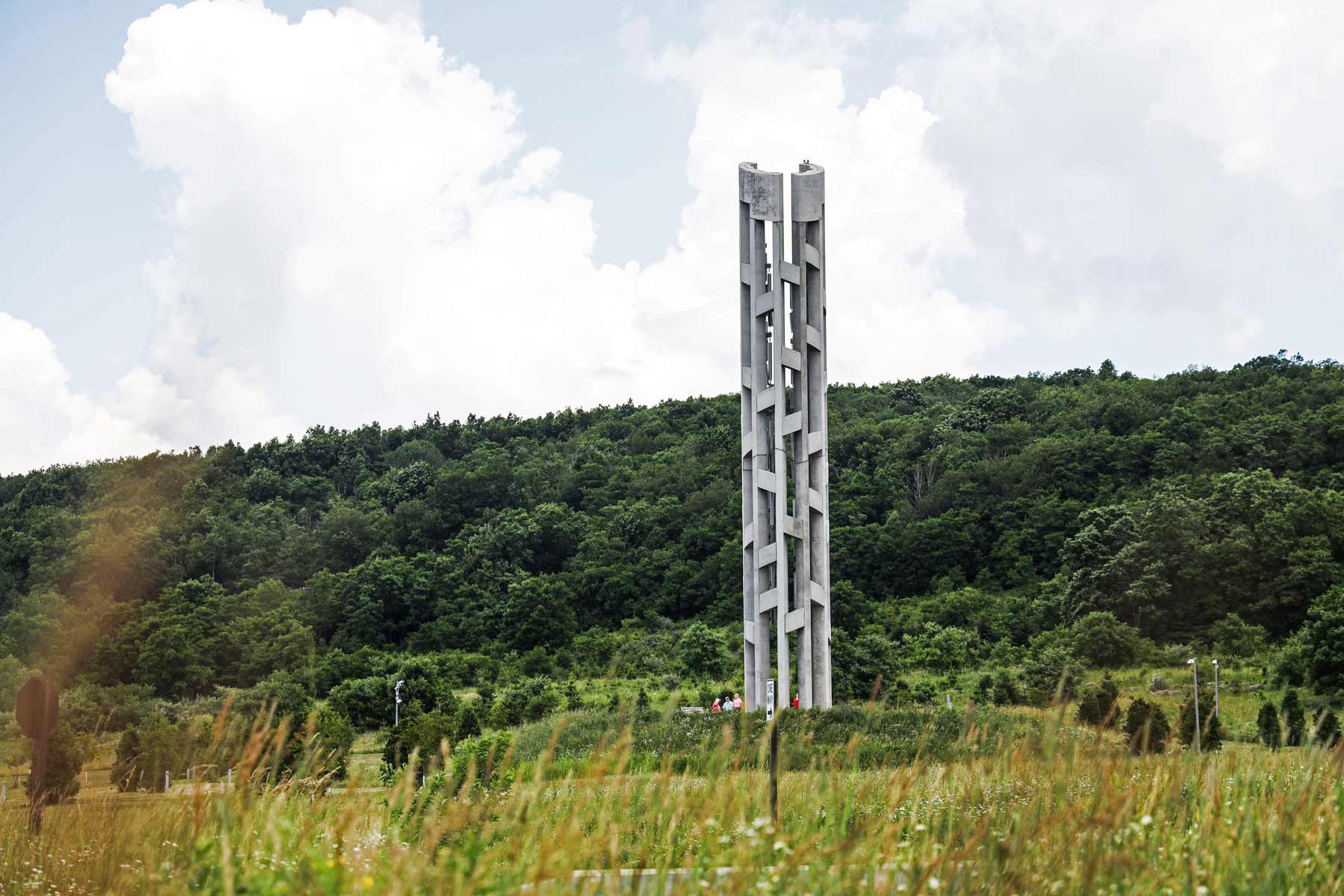
4. Eisenhower National Historic Site
We’re on to the “Final Four” on our list of the Best Pennsylvania Landmarks. At #4 is a site which celebrates the life and legacy of one of America’s greatest military heroes who also happened to be the 34th President of the United States. It’s the Eisenhower National Historic Site.
The Eisenhower National Historic Site is located near Gettysburg, Pennsylvania and is dedicated to preserving the legacy of Dwight D. Eisenhower, the 34th President of the United States. The site includes Eisenhower’s former home and farm, as well as extensive grounds and gardens.
Eisenhower purchased the farm in 1950, while he was serving as President of Columbia University, and used it as a retreat during his presidency and beyond.
Eisenhower was an avid outdoorsman and enjoyed working on the farm, which he referred to as his “hobby.” The farm was also a place where Eisenhower entertained world leaders and other important figures, including British Prime Minister Winston Churchill.
After Eisenhower’s death in 1969, the farm was transferred to the National Park Service and designated a National Historic Site.
Today, visitors to the site can explore the house and farm, which have been preserved to their appearance during Eisenhower’s time there.
The site also includes a Visitor Center and Museum, which features exhibits on Eisenhower’s life and career, as well as educational programs and events throughout the year.
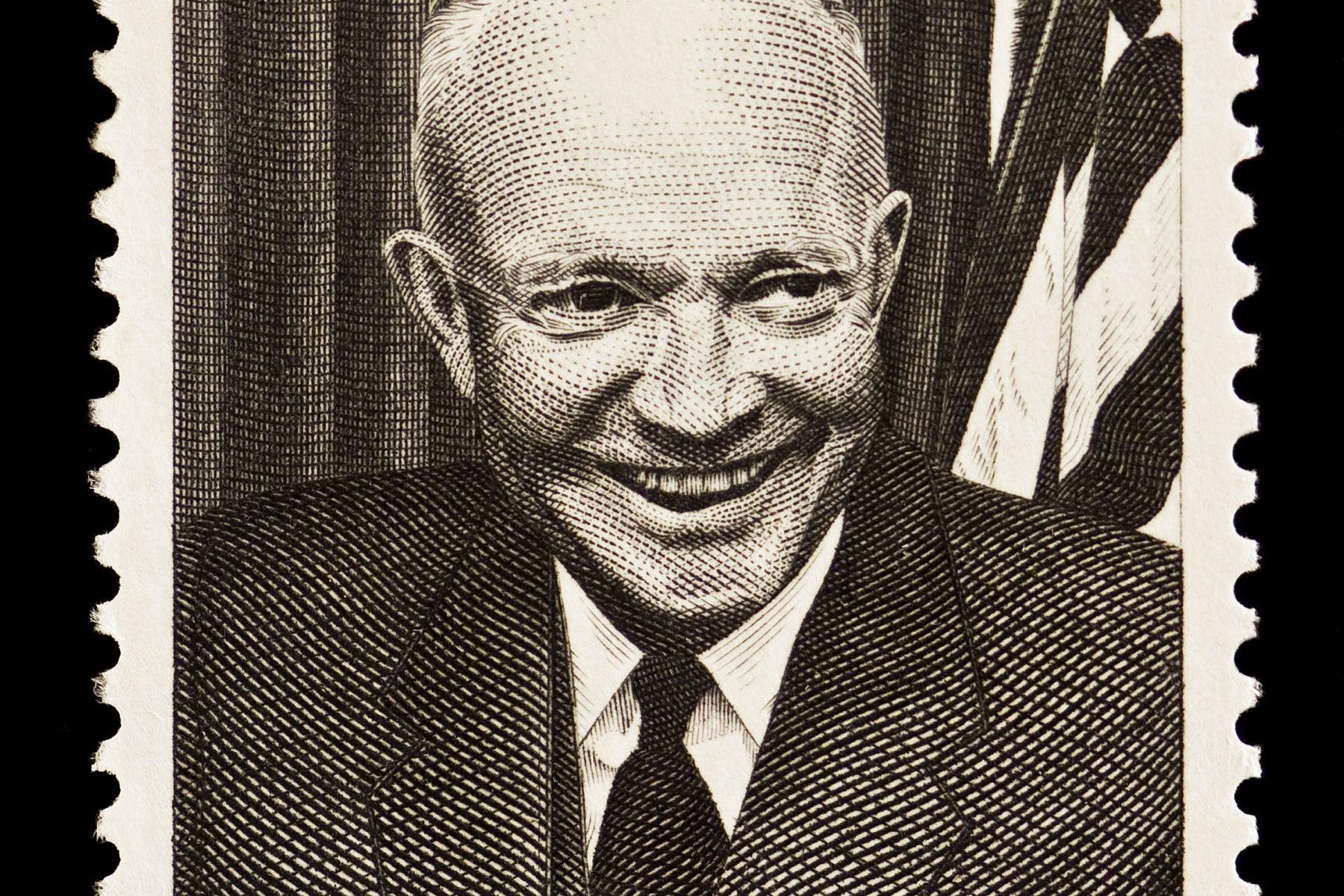
3. Valley Forge National Historical Park
For our final three historic sites, we have selected three places which were an integral part of the American story. At #3 is the first of these places which served as a proving ground for the Continental Army as it did battle against the most powerful nation on the earth.
It’s Valley Forge National Historical Park.
On December 19th, 1777, 12,000 soldiers and 400 women and children marched into Valley Forge and began to build what essentially became the fourth largest city in the colonies at the time, with 1,500 log huts and two miles of fortifications.
It was where the American Continental Army made camp during the winter of 1777-1778. It was here that the American forces became a true fighting unit. Valley Forge is often called the birthplace of the American Army.
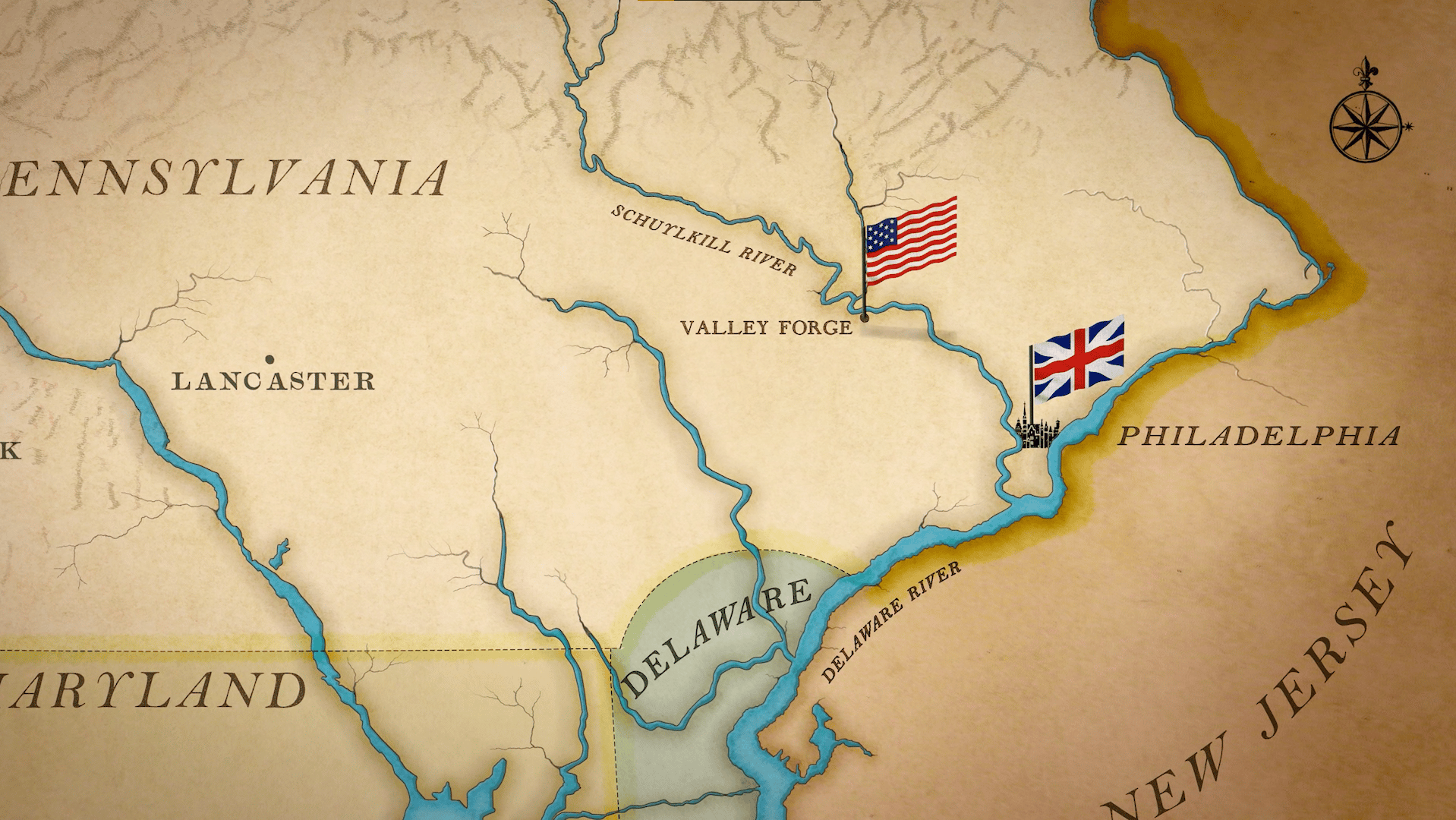
Things To Do At Valley Forge:
These are a few of my favorite things to do:
- Explore the Park’s History: The park is a significant historical site where George Washington and his troops camped during the American Revolutionary War. You can explore the park’s history by visiting the encampment site, the Washington’s Headquarters, and the Valley Forge Visitor Center.
- Hiking and Biking Trails: Valley Forge National Historical Park has over 30 miles of hiking and biking trails, which offer breathtaking views of the park’s natural beauty. You can enjoy walking or biking on these trails and explore the park’s different terrains.
- Picnicking: The park has several picnic areas where you can relax and enjoy a picnic with your friends or family. There are picnic tables, grills, and scenic views of the park.
- Bird Watching: Valley Forge National Historical Park is a haven for birdwatchers. The park has over 225 bird species, making it a perfect destination for bird watching. Bring binoculars and a field guide and see how many birds you can spot.
- Fishing: The park has several streams and ponds where you can fish. You can catch a variety of fish, including trout, bass, and catfish.
- Horseback Riding: The park has over 15 miles of horseback riding trails, which are perfect for horse enthusiasts. You can bring your own horse or rent one from a nearby stable.
- Winter Sports: During the winter, the park offers activities like cross-country skiing and snowshoeing. You can rent equipment at the Valley Forge Visitor Center and explore the park’s winter landscape.
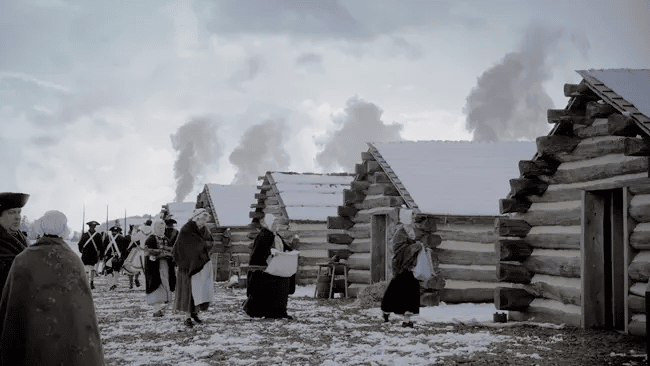
2. Gettysburg National Military Park
We move on to a historic site which is in the runner-up position at #2. It’s the place where the decisive battle was fought in America’s bloodiest conflict. At #2 on our list of the Best Historic Sites In Pennsylvania is Gettysburg National Military Park.
The Battle of Gettysburg was a major battle fought between the Confederate Army of Northern Virginia, commanded by General Robert E. Lee, and the Union Army of the Potomac, commanded by General George G. Meade, during the American Civil War. The battle took place in and around the town of Gettysburg, Pennsylvania, from July 1-3, 1863.
The battle began on July 1, when Confederate forces under the command of General Richard Ewell launched a surprise attack on Union forces commanded by General John Buford, who had been sent to hold the town of Gettysburg. The Confederate forces were able to drive the Union troops back, but the arrival of Union reinforcements, led by General Winfield Scott Hancock, helped to stabilize the situation.

It Was A Turning Point Of The American Civil War
On July 2, General Lee launched a series of attacks on the Union positions, including an assault on a hill known as Little Round Top, which was successfully defended by Union forces under the command of Colonel Joshua Lawrence Chamberlain. The fighting was intense and brutal, and both sides suffered heavy casualties.
On July 3, Lee ordered a massive assault on the center of the Union lines, known as Pickett’s Charge, which was repulsed with heavy losses for the Confederates. The battle ended with a Union victory, and Lee was forced to retreat back into Virginia.
The Battle of Gettysburg was the largest and bloodiest battle of the American Civil War, with over 50,000 casualties.
It is often seen as a turning point in the war, as it marked the end of Confederate attempts to invade the North and helped to boost Union morale. The battle also has significant historical and cultural significance, and is remembered as a defining moment in American history.
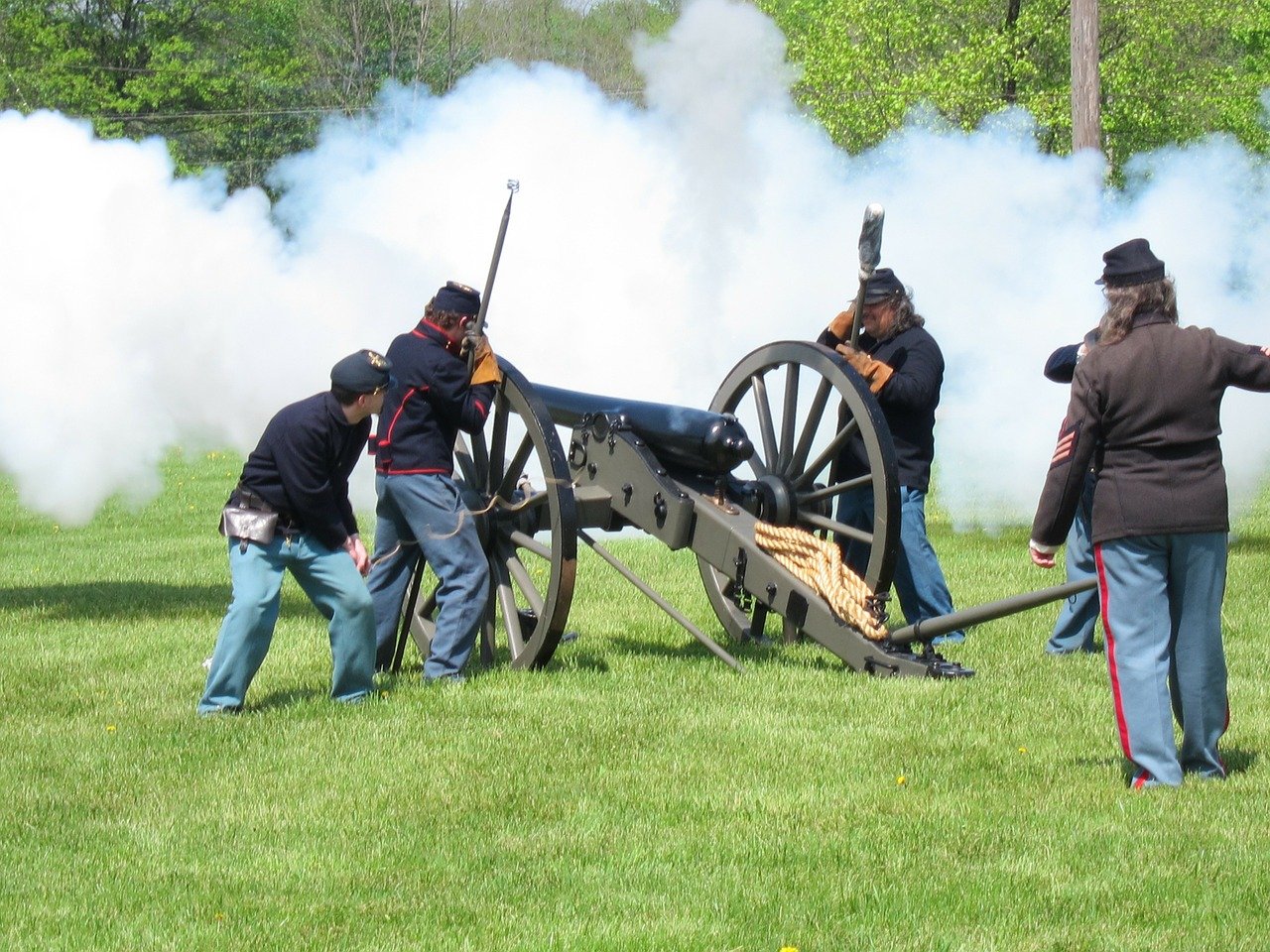
The National Military Park
The park covers an area of over 9,000 acres and includes a variety of historic structures, monuments, and battlefield sites. Visitors can take self-guided or ranger-led tours of the park to learn about the events of the battle and the significance of the site in American history.
One of the most significant features of the park is the Gettysburg Battlefield, which is a vast expanse of fields, hills, and woods that serves as a poignant reminder of the terrible fighting that took place during the battle.
Visitors can drive or walk along the battlefield roads, stopping at key sites such as Little Round Top, Devil’s Den, and Cemetery Hill. Interpretive signs and exhibits are located throughout the battlefield to provide context and information about the events of the battle.
Another important feature of the park is the Soldiers’ National Cemetery, which is the final resting place of many of the Union soldiers who died at Gettysburg. The cemetery includes the famous Soldiers’ National Monument, which was dedicated by President Lincoln in 1863 and serves as a symbol of the sacrifice and heroism of the soldiers who fought and died at Gettysburg.
The park also includes several historic structures and buildings, including the David Wills House, which served as the temporary headquarters for President Lincoln during his visit to Gettysburg to deliver the Gettysburg Address.
In addition to its historic features, the park also offers a variety of recreational activities, including hiking, biking, and horseback riding. Visitors can explore the park’s scenic trails and take in the beauty of the surrounding countryside.
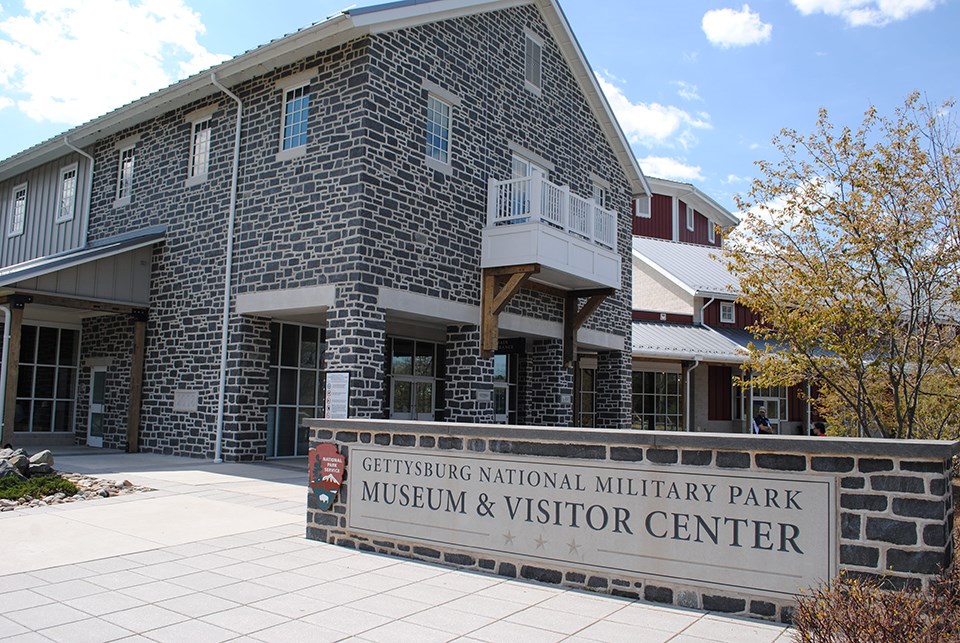
1. Independence Hall & The Liberty Bell
We’ve saved the best for last! More Than Just Parks #1 Philadelphia Landmark is Independence Hall & The Liberty Bell.
Independence Hall was constructed between 1732 and 1753 as the Pennsylvania State House and served as the meeting place of the Continental Congress from 1775 to 1783. It was here that some of the most important events in American history took place, including the signing of the Declaration of Independence and the adoption of the United States Constitution.
The Continental Congress first met in Independence Hall in 1775, where it began to organize the colonies’ defense against the British Empire.
In June 1776, the Second Continental Congress, meeting in Independence Hall, adopted the Declaration of Independence, which declared the 13 American colonies independent from British rule. The Declaration was signed by 56 representatives of the colonies, including Thomas Jefferson, John Adams, and Benjamin Franklin.
From 1785 to 1787, Independence Hall was also the site of the Constitutional Convention, which was convened to address problems with the Articles of Confederation, the nation’s first governing document.
It was here that the delegates drafted the United States Constitution, which established the structure and function of the federal government and remains the supreme law of the land to this day.
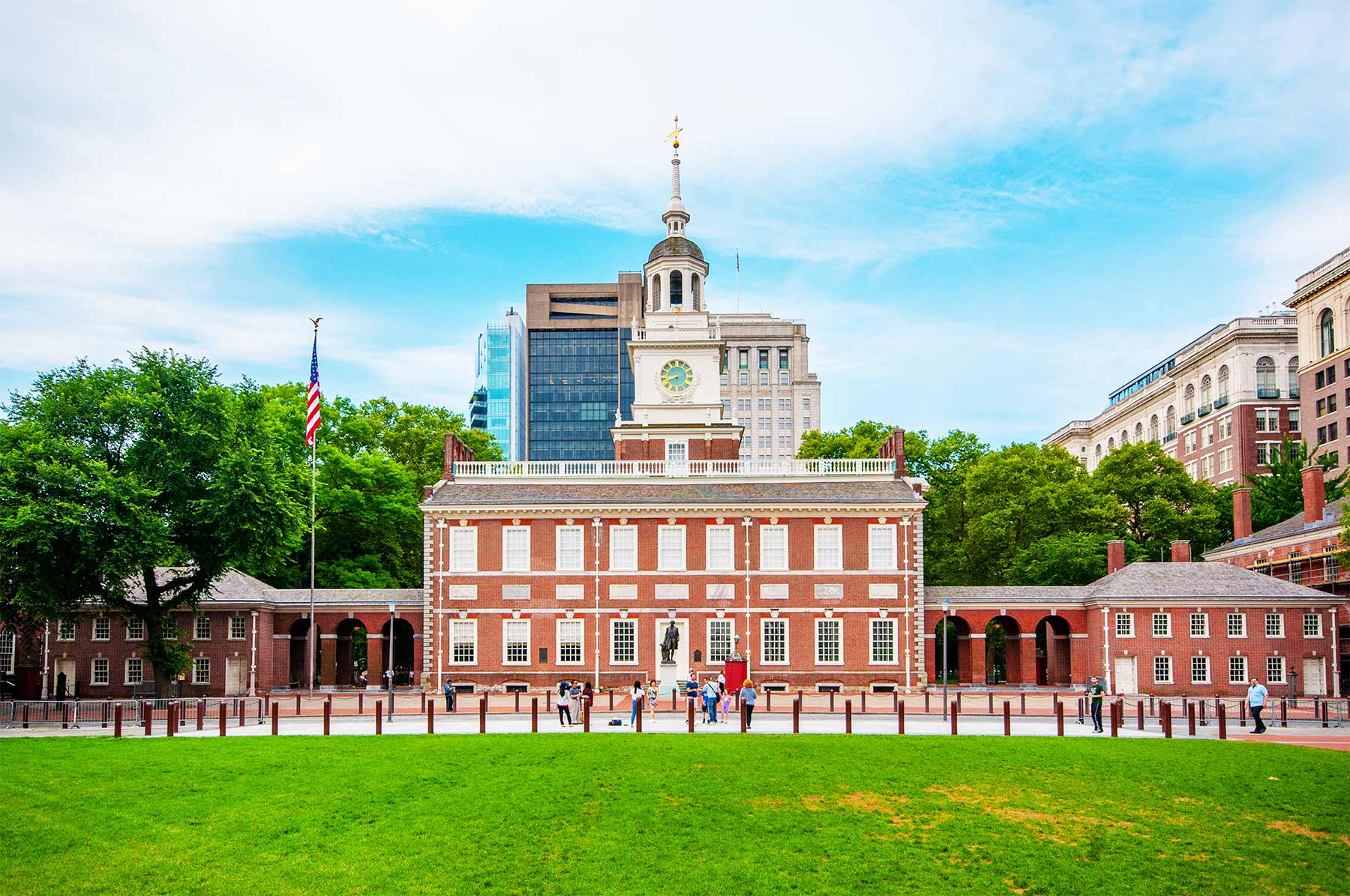
The National Historical Park
Independence National Historical Park is located in Philadelphia, Pennsylvania, and was established on July 4, 1956, to preserve and protect several historic sites associated with the founding of the United States. The park covers an area of over 55 acres and contains many important historic buildings and monuments, including Independence Hall, the Liberty Bell, and Congress Hall.
The park’s history can be traced back to the early 20th century when efforts were made to preserve Independence Hall, the birthplace of the Declaration of Independence and the Constitution. In 1948, Congress passed the Historic Sites Act, which provided federal funds for the preservation and interpretation of significant historic sites across the country.
With the passage of the Historic Sites Act, efforts to create a national park in Philadelphia gained momentum. In 1951, the Independence Hall Association was formed, and its members worked to acquire and preserve historic sites in the area. The association’s efforts, along with those of other civic groups, led to the creation of Independence National Historical Park in 1956.
Over the years, the park has grown to include more than 20 historic buildings and monuments, many of which are open to the public for tours and other educational programs. These include Independence Hall, the Liberty Bell Center, the Benjamin Franklin Museum, Congress Hall, and the National Constitution Center.
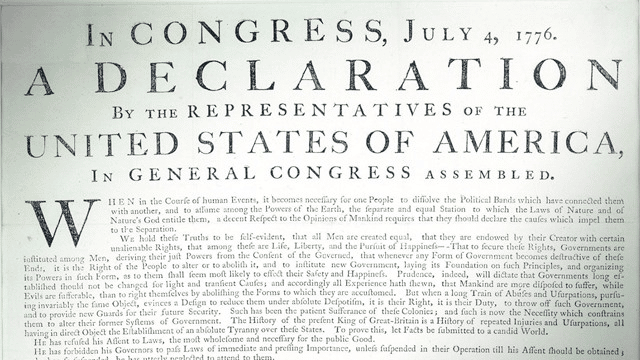
While You’re There, Be Sure To See The Liberty Bell
Another important feature of the park is the Liberty Bell, which is housed in a glass pavilion adjacent to Independence Hall. The bell has become an enduring symbol of American freedom and independence, and visitors can learn about its history and significance through exhibits and interpretive programs.
The Benjamin Franklin Museum, located near the Independence Hall, is dedicated to the life and legacy of one of America’s most famous founding fathers. The museum features interactive exhibits and displays that explore Franklin’s many accomplishments as a scientist, inventor, and statesman.
In addition to these sites, the park includes a number of other historic buildings and landmarks, such as Congress Hall, the Old City Hall, and the Bishop White House. Visitors can explore the park’s many historic streets and alleys and take in the beauty of the surrounding historic architecture.
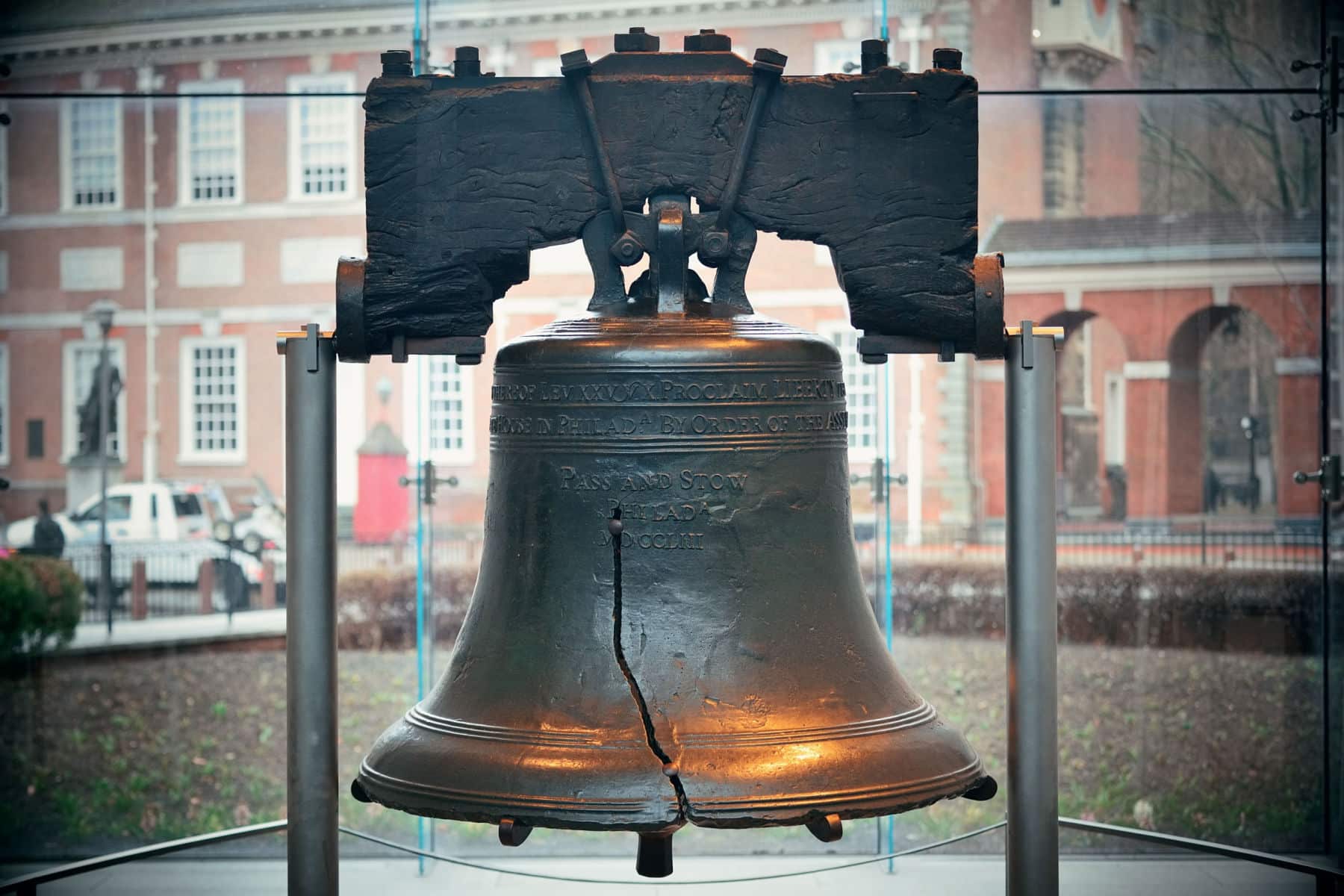
For Anyone Who Loves History There’s No Place Quite Like It
For anyone who loves history (and even for those folks who don’t) this is one of the most exciting historical tours. At Independence Hall, visitors learn the stories about the people and events which shaped America.
There’s an old saying that goes, “If this place could only talk.” Well, at Independence Hall, it can talk as the stories come to life about the unique history of a very special place which brought together an amazing group of men who produced not one, but two of the most important documents in the history of the world.
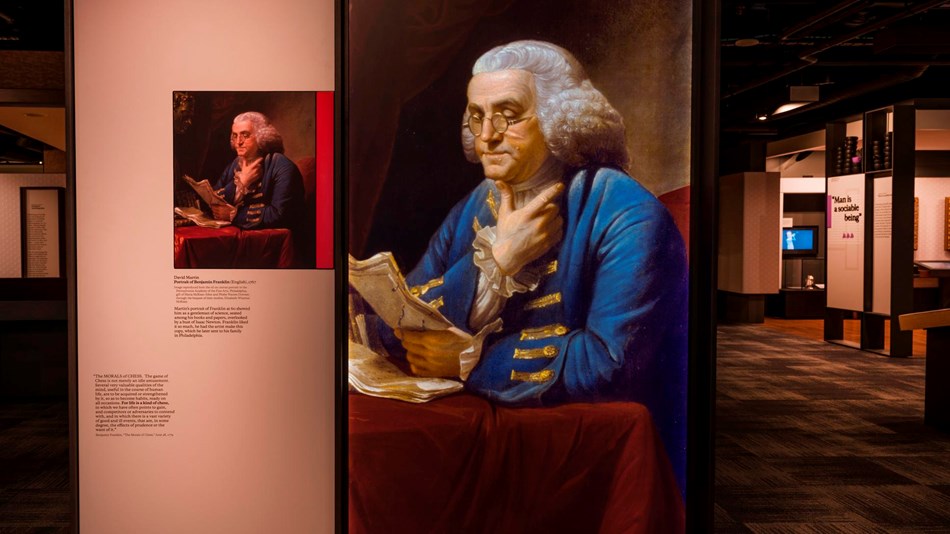
Map Of Pennsylvania Landmarks
List Of Pennsylvania Landmarks
- Independence Hall & The Liberty Bell
- Gettysburg National Military Park
- Valley Forge National Historical Park
- Eisenhower National Historic Site
- Flight 93 National Memorial
- Benjamin Franklin Museum
- Hershey’s Chocolate World
- Betsy Ross House
- Johnston Flood Museum
- President’s House
- Philadelphia Zoo
- Thaddeus Kosciuszko National Memorial
- Washington Crossing Historic Park
- Museum of the American Revolution
- Elfreth’s Alley
- The African American Museum in Philadelphia
- National Constitution Center
- Allegheny Portage Railroad National Historic Site
- American Philosophical Society Museum
- Fort Necessity National Battlefield
Why Trust Us About Pennsylvania Landmarks?
We’re Jim Pattiz and Will Pattiz, collectively known as the Pattiz Brothers and we absolutely LOVE the national parks.
You should probably know that we don’t just make this stuff up out of thin air. We’ve spent our entire adult lives exploring and filming America’s national parks and public lands.
We’ve worked with the National Park Service, the Department of Interior, USDA, U.S. Forest Service, and more for years creating films on important places and issues. Our work has been featured in leading publications all over the world and even some people outside of our immediate family call us experts on the national parks.
And, in 2018, our father – having spent a lifetime teaching history – joined us so that he could help us to tell the stories behind these amazing places.
Meet The Parks Brothers
We Hope You’ll Follow Our Journey

Our goal here at More Than Just Parks is to share the beauty of America’s national parks and public lands through stunning short films in an effort to get Americans and the world to see the true value in land conservation.
We hope you’ll follow our journey through the parks and help us to keep them the incredible places that they are. If you’re interested in joining the adventure then sign up below!
Related Links
What Is A National Park? Check out our article that explains everything!
Civil War Sites: Top 10 Best Civil War Sites & Battlefields
Revolutionary War Sites: Top 10 Best Revolutionary War Sites & Battlefields
Pennsylvania National Parks: 22 EPIC Pennsylvania National Parks Worth Visiting
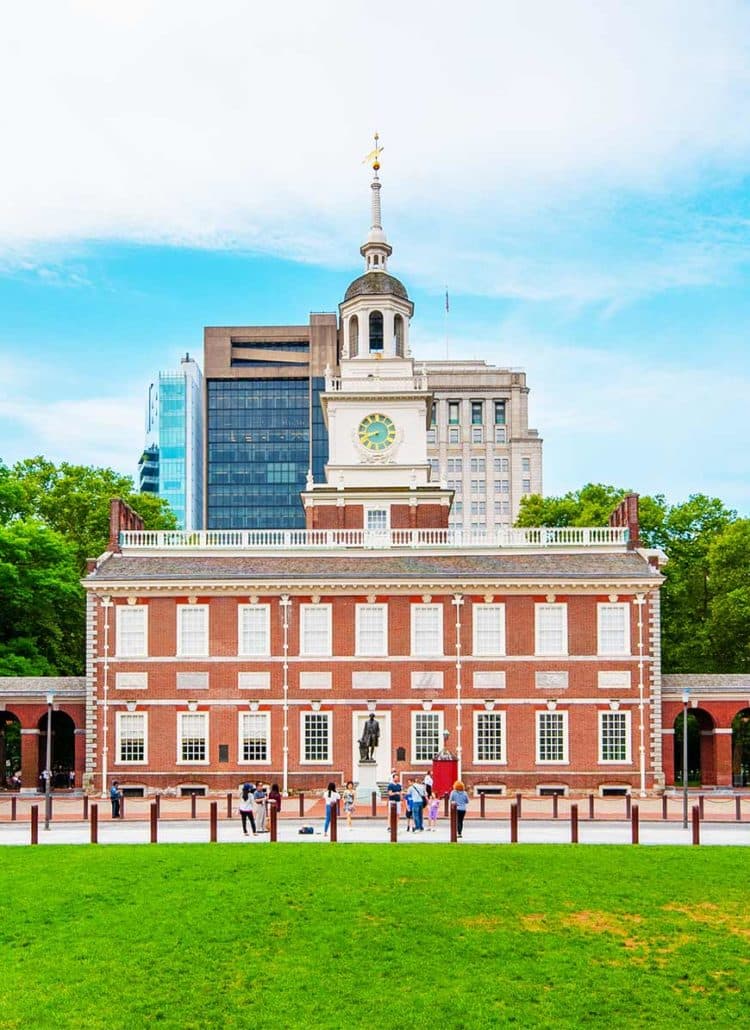
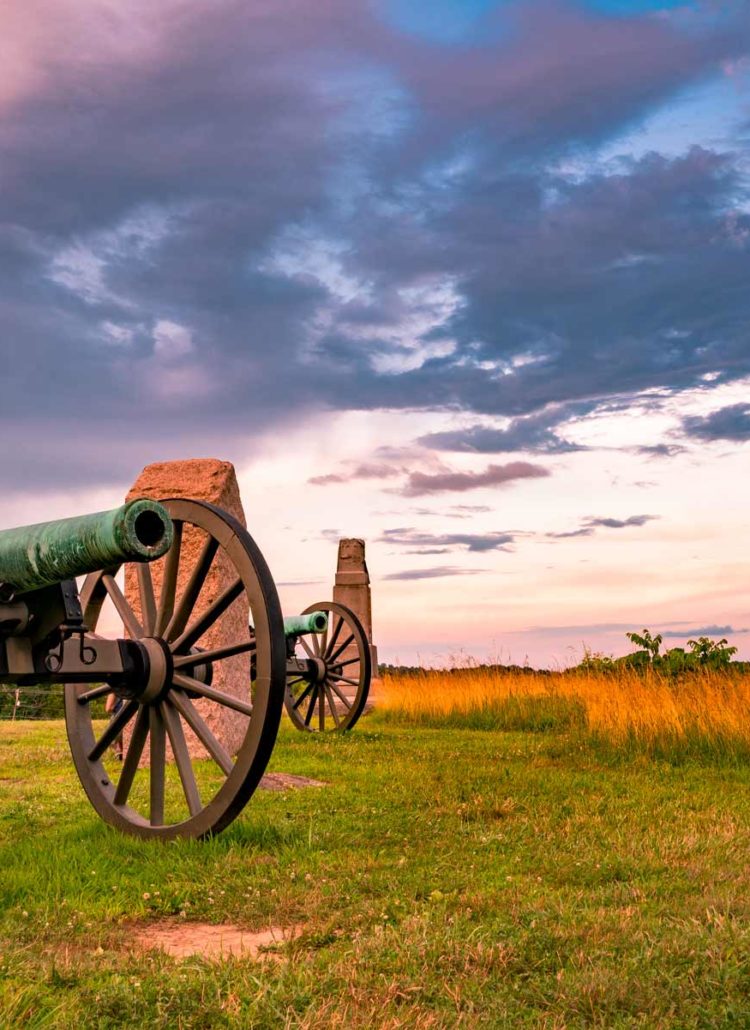

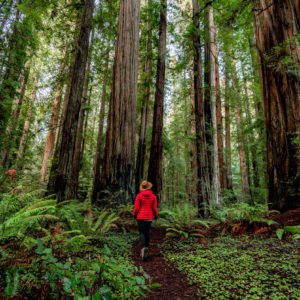

Leave a Reply